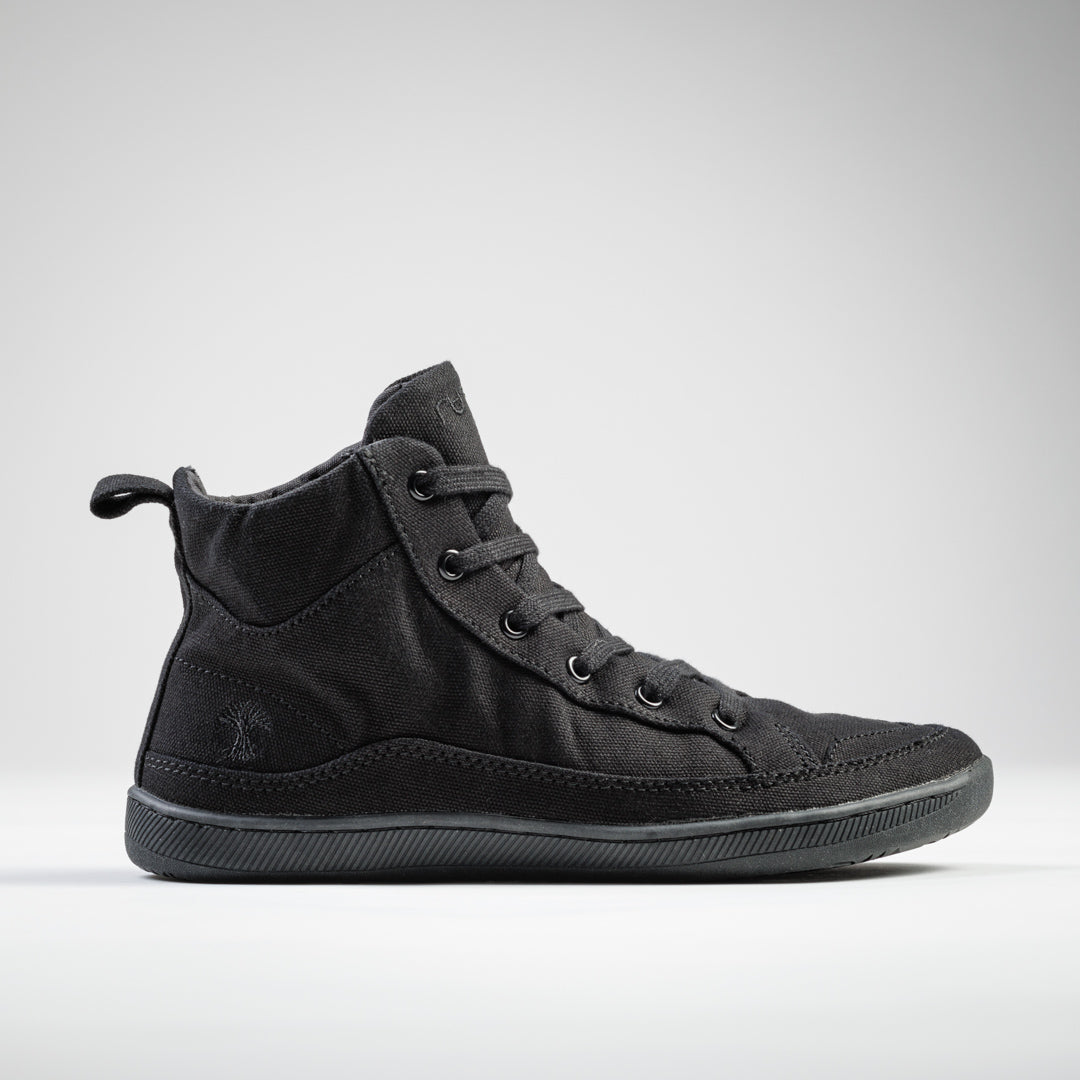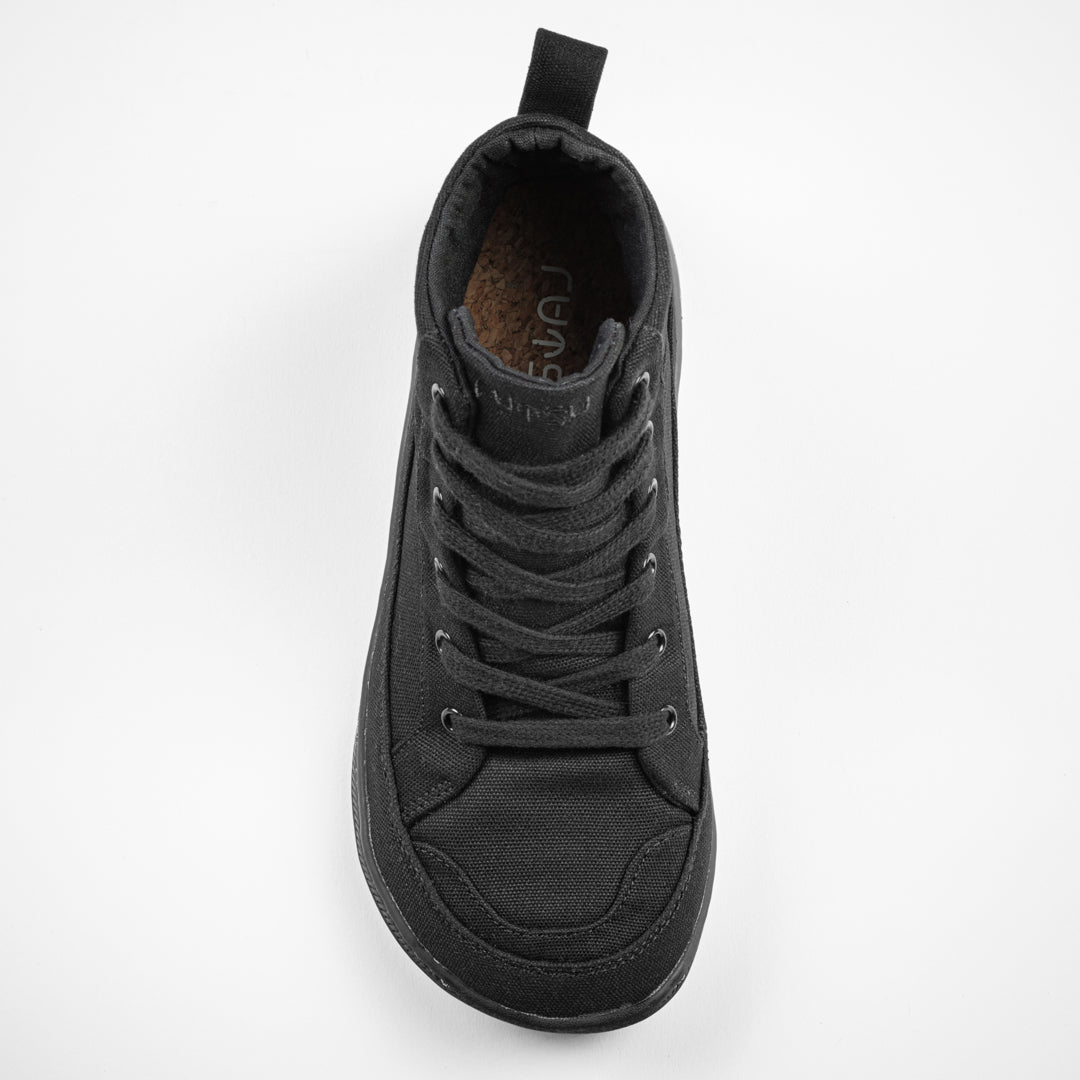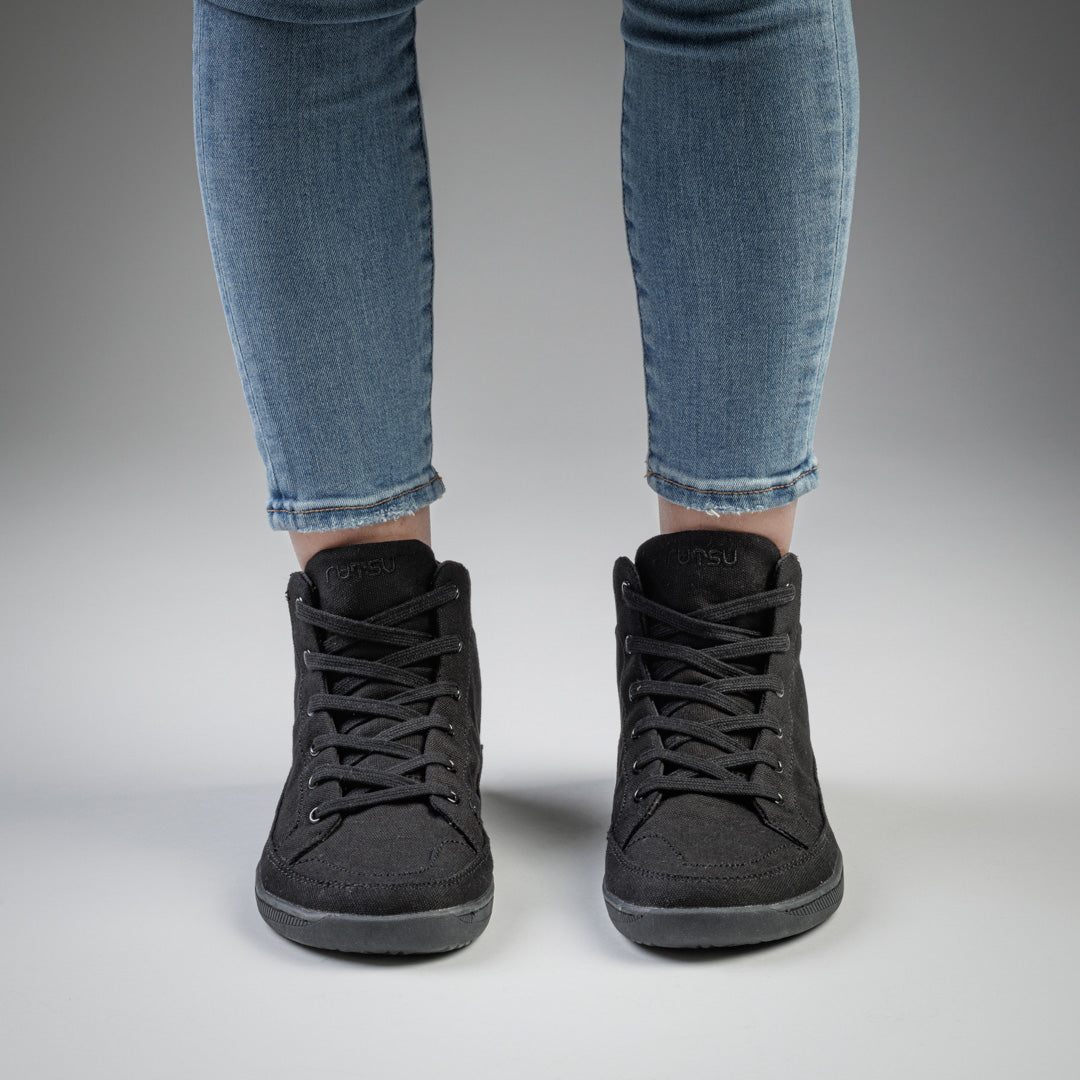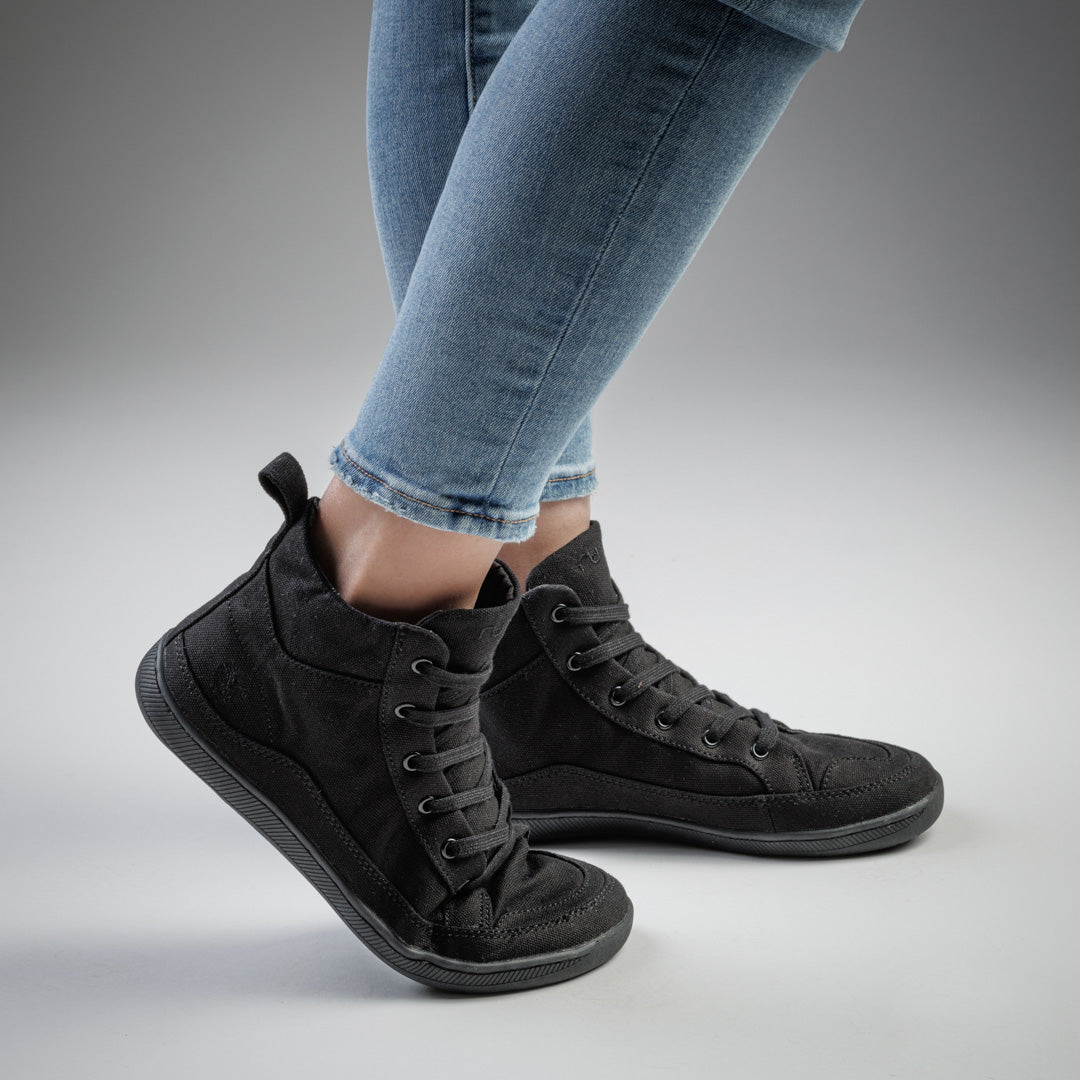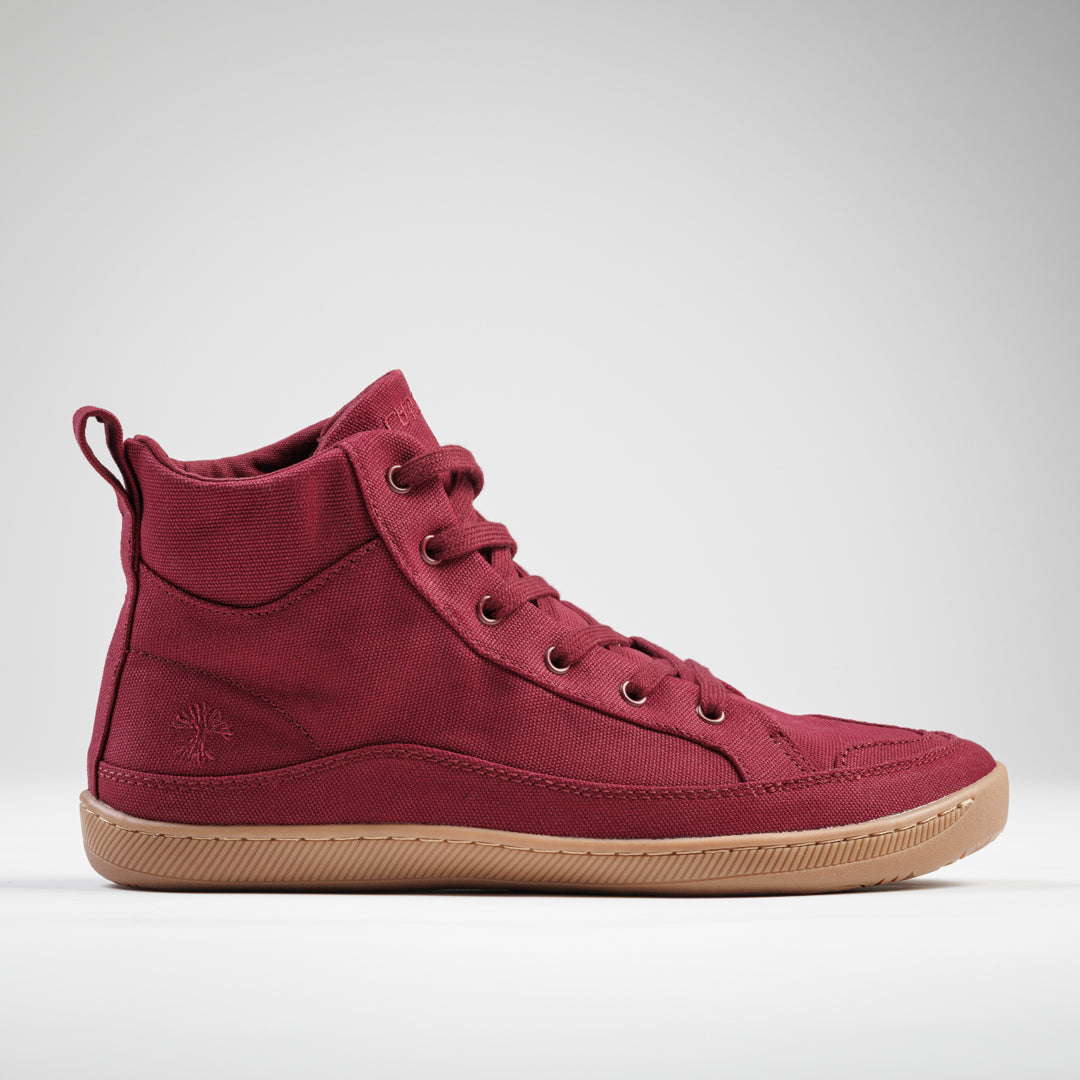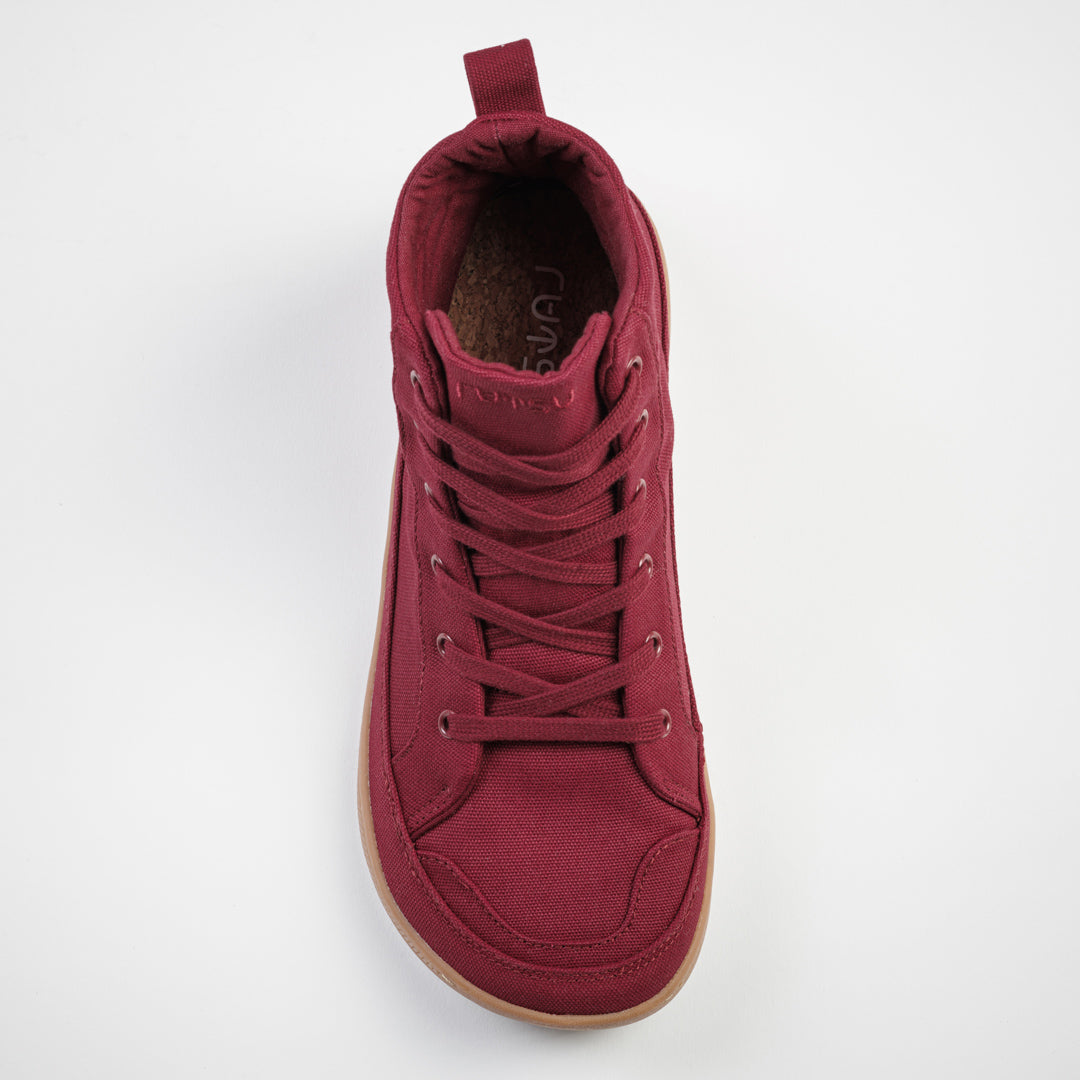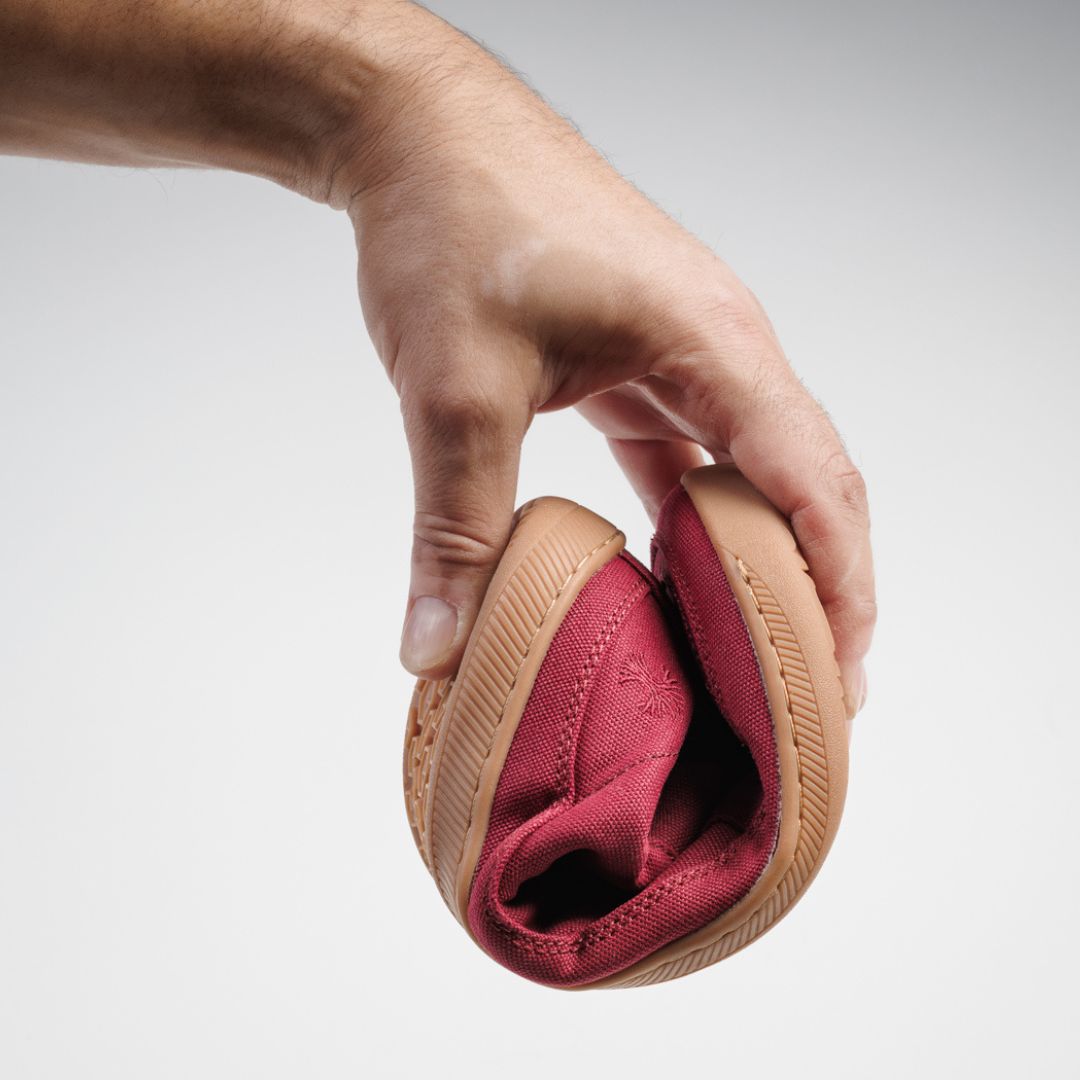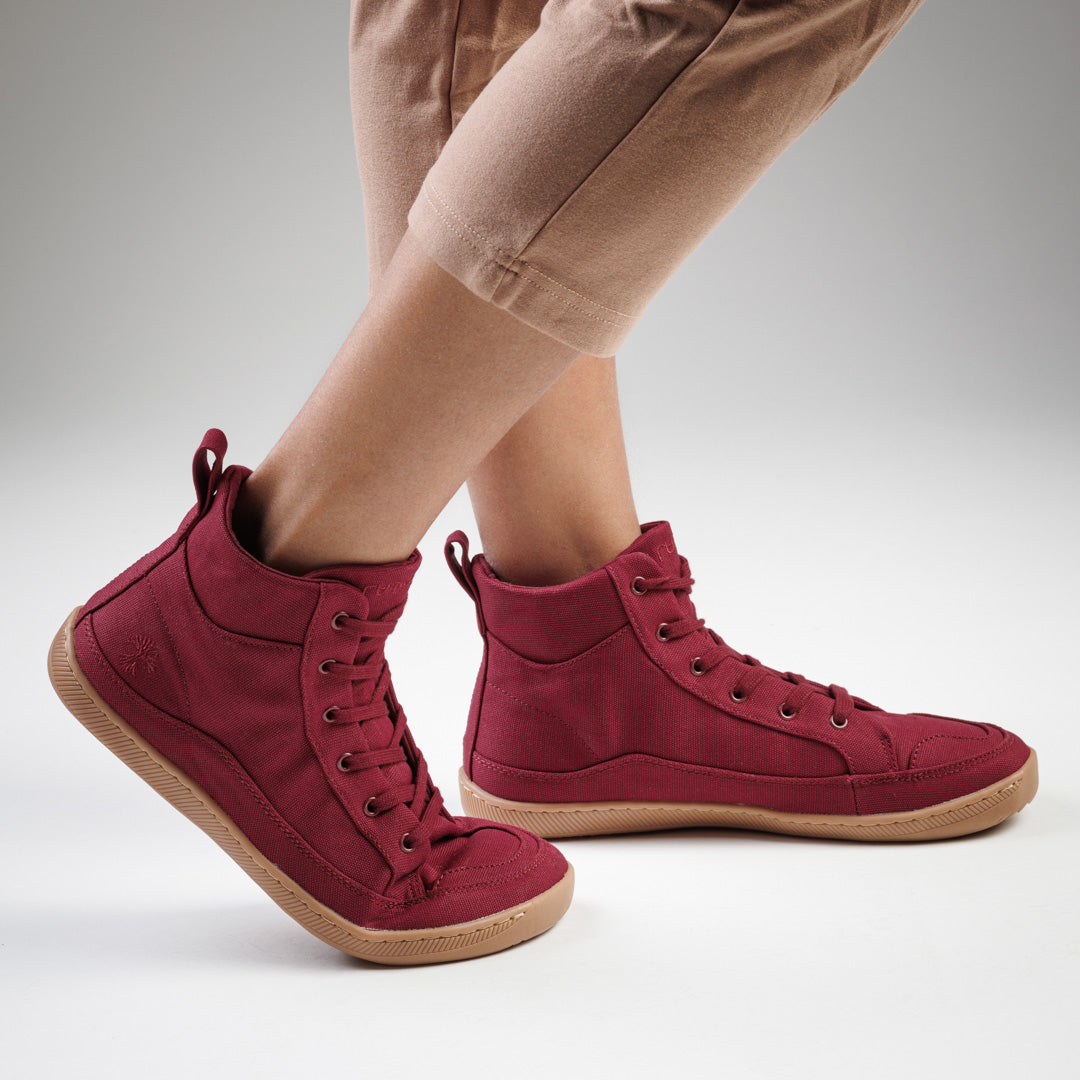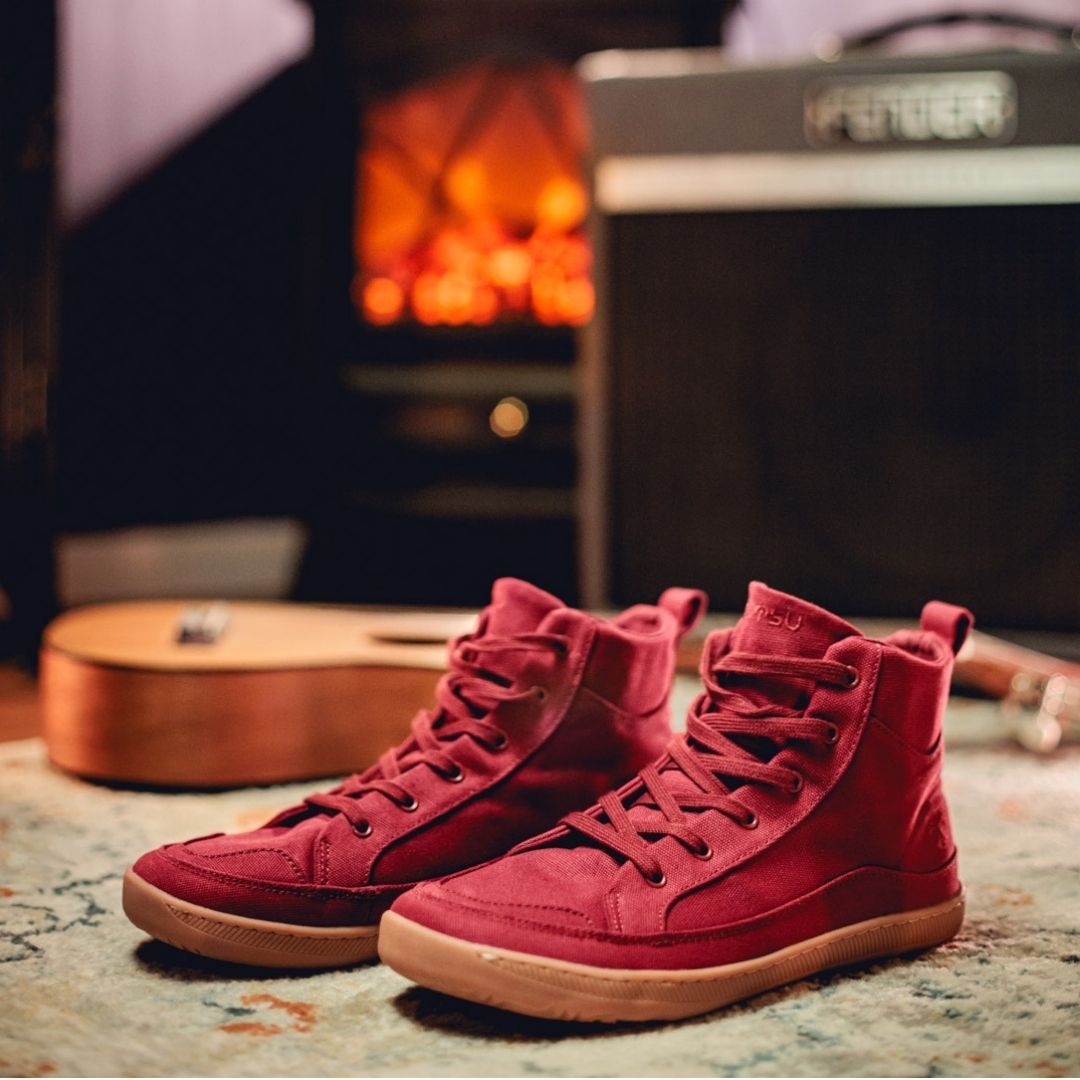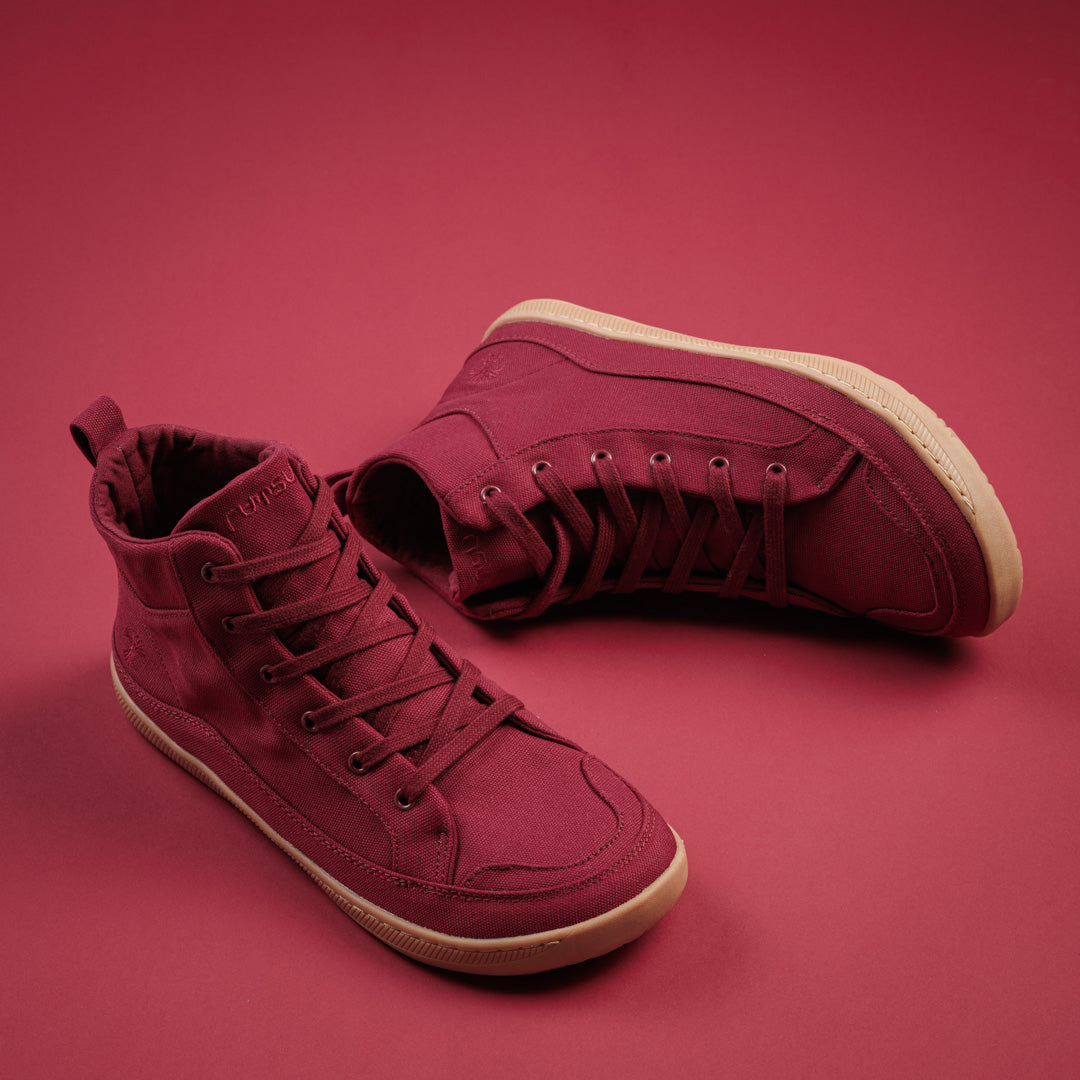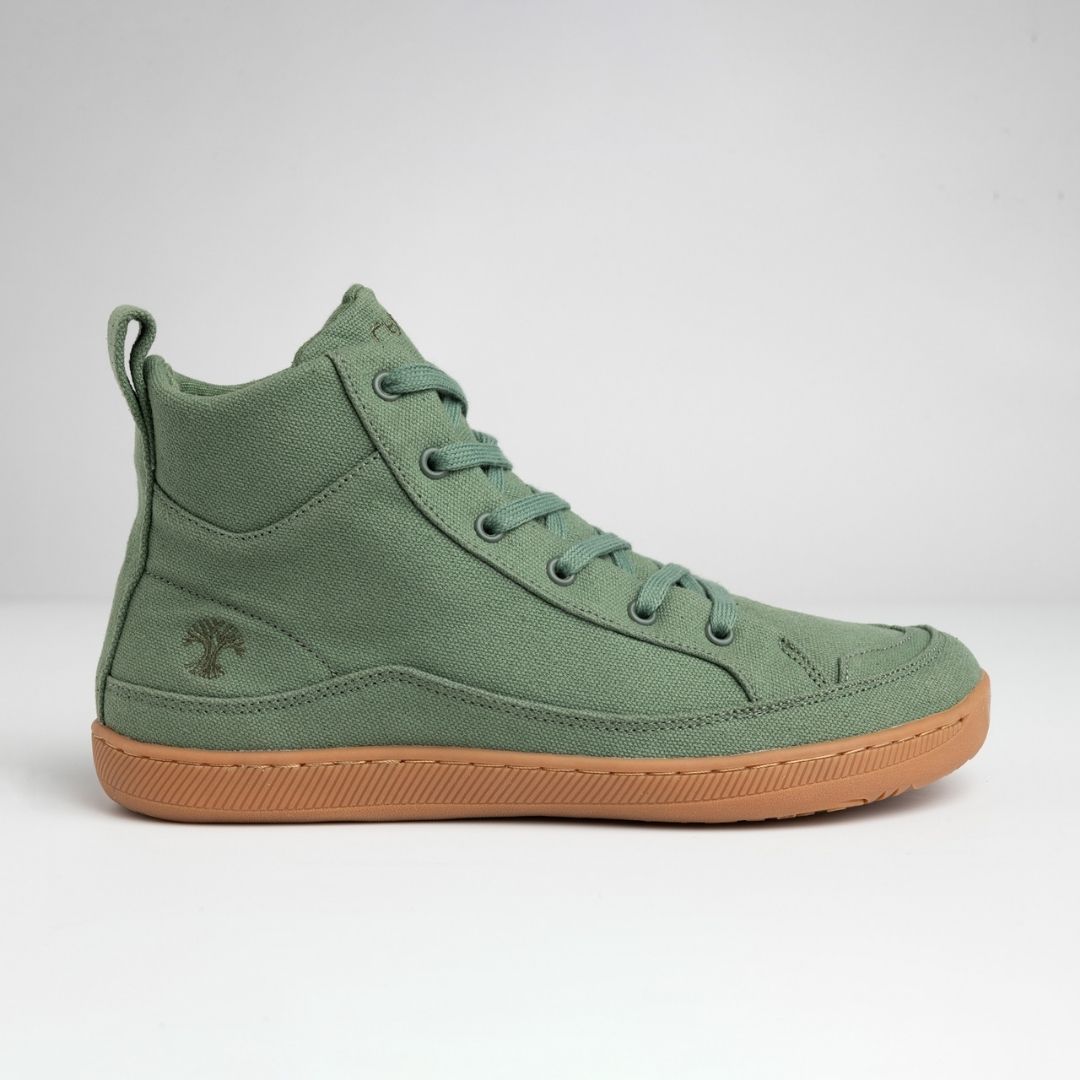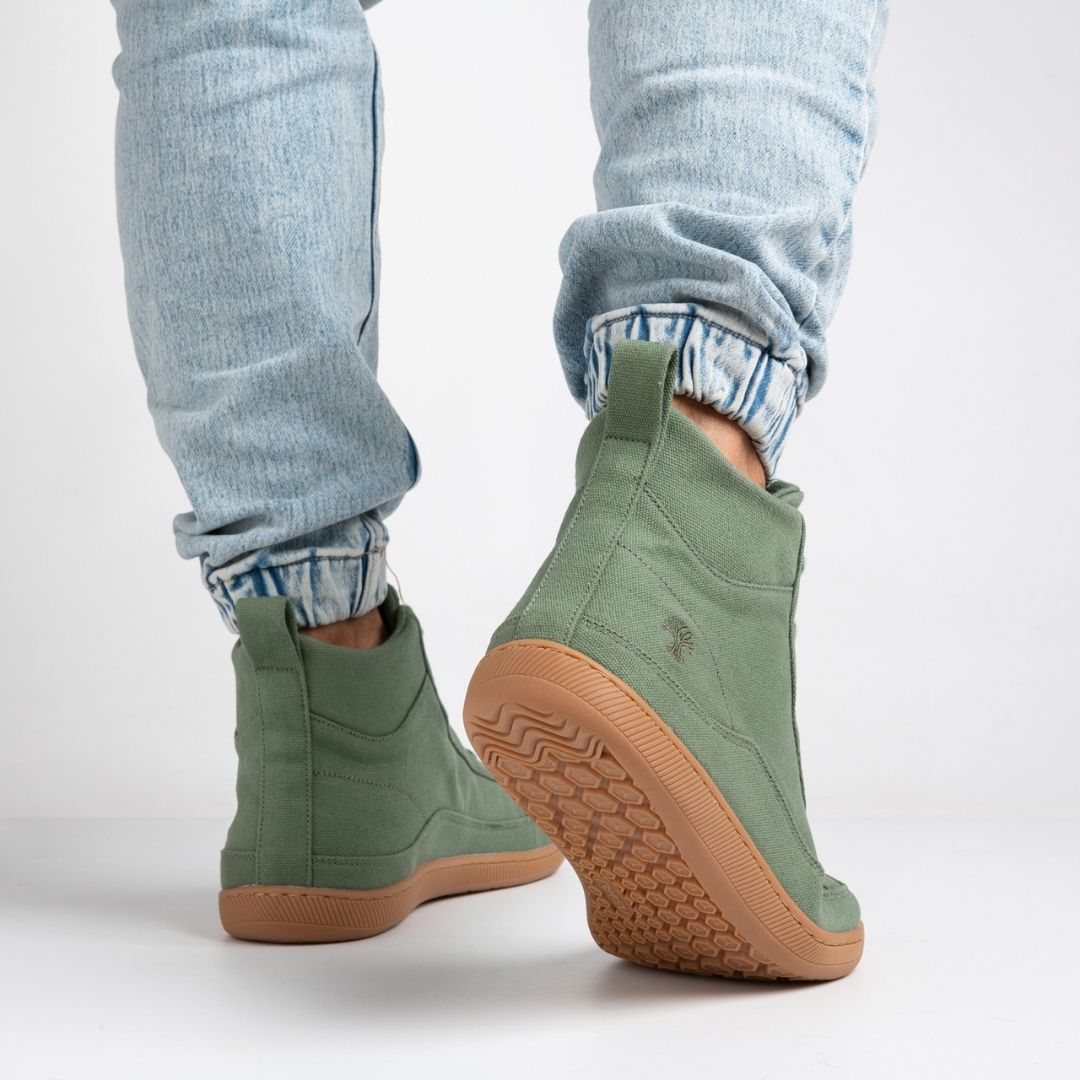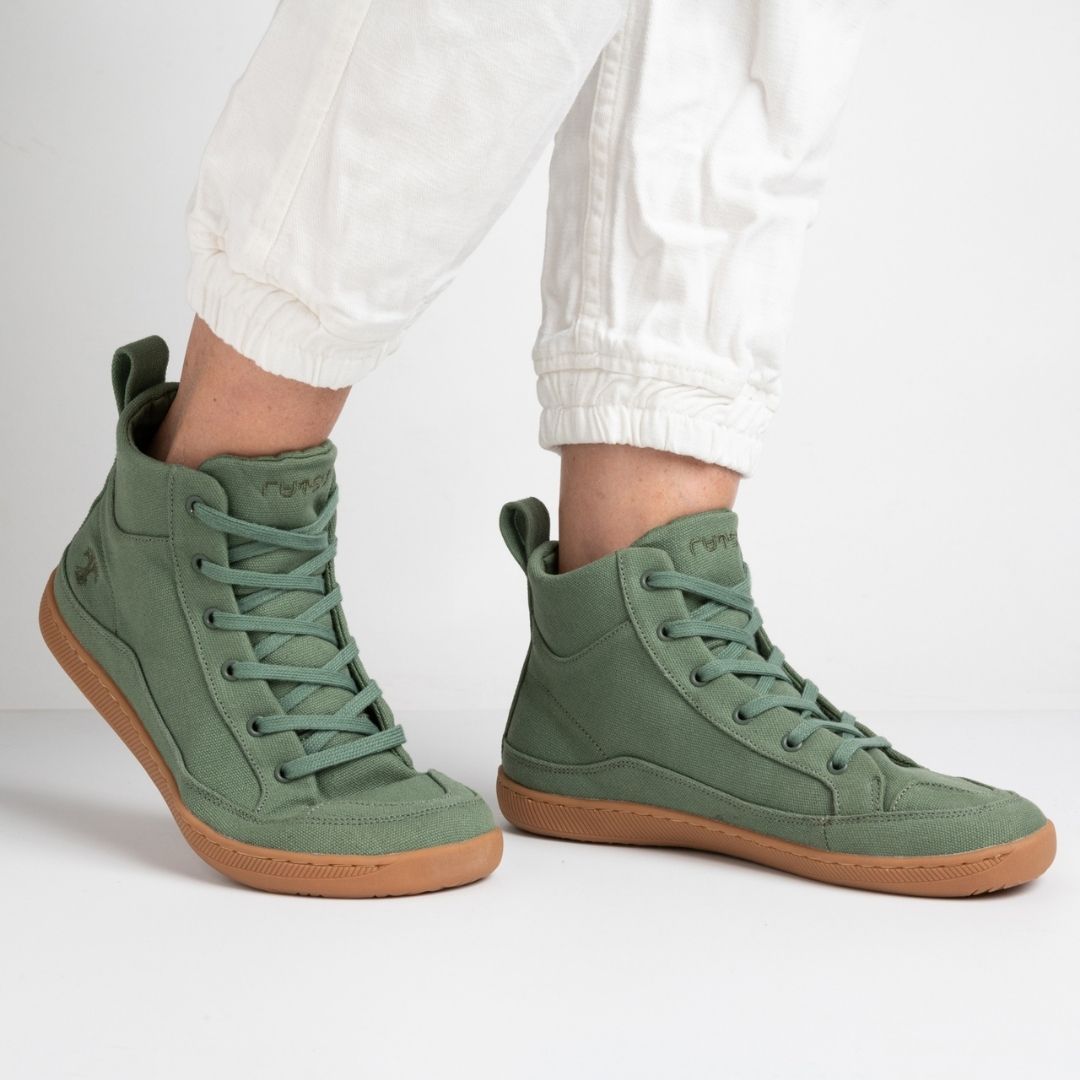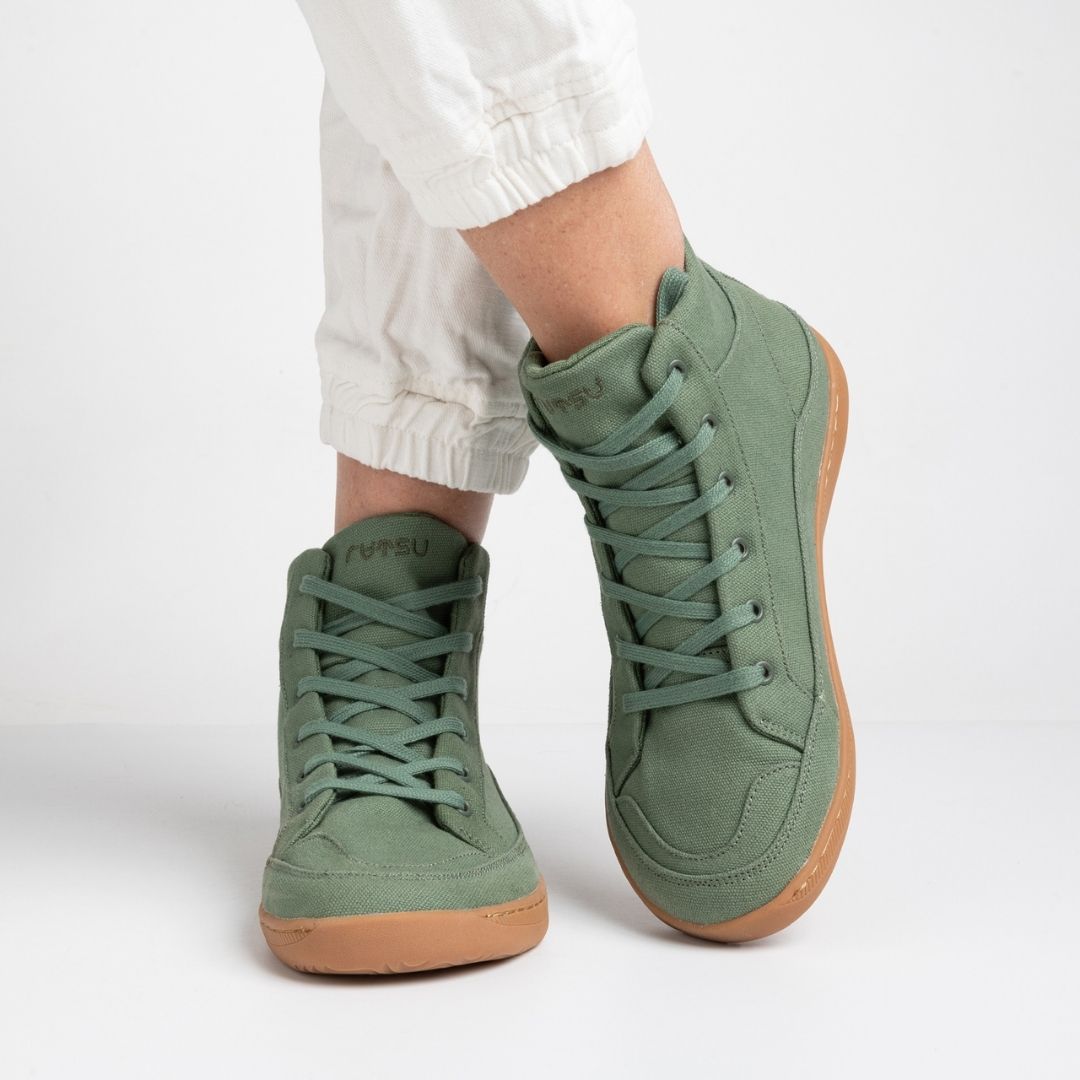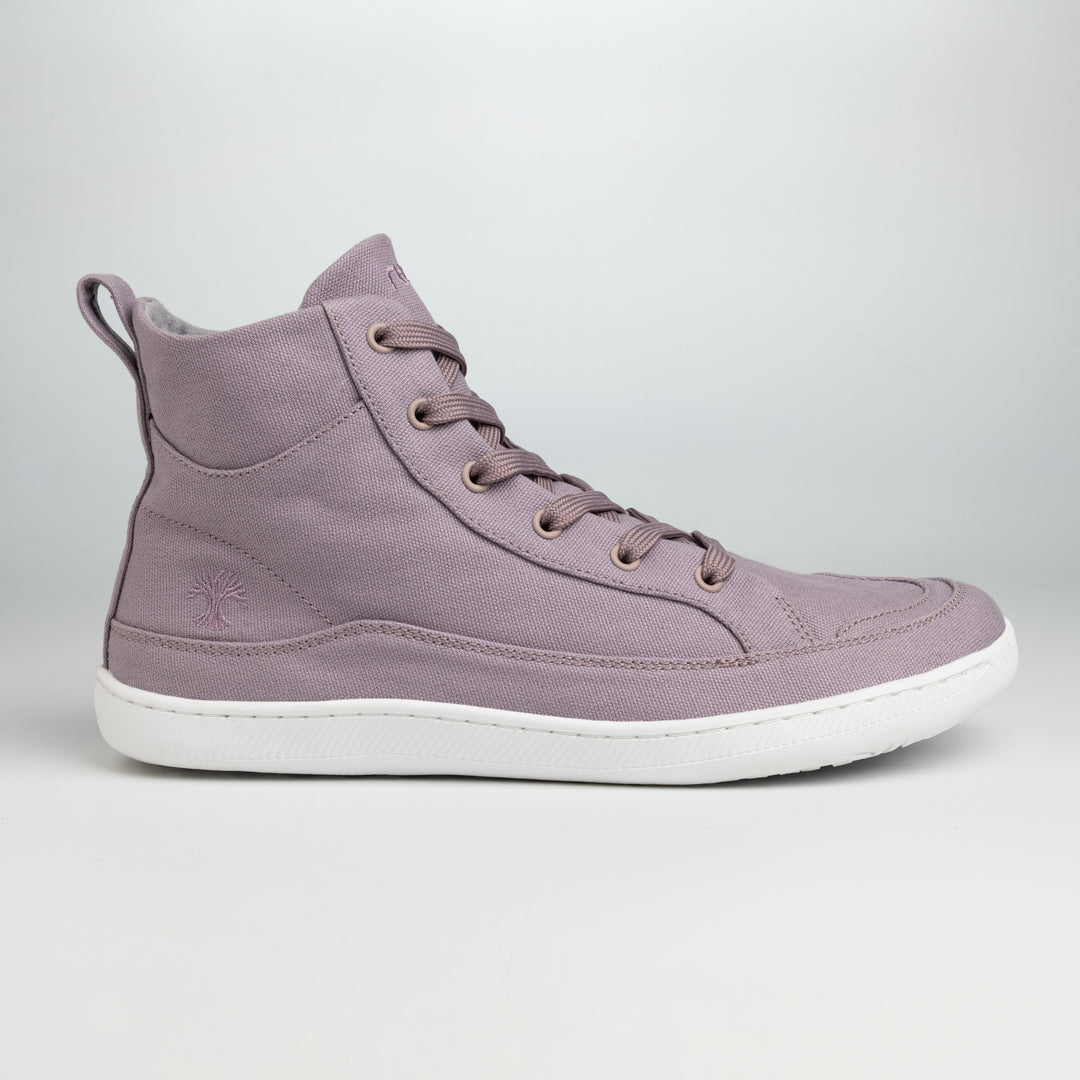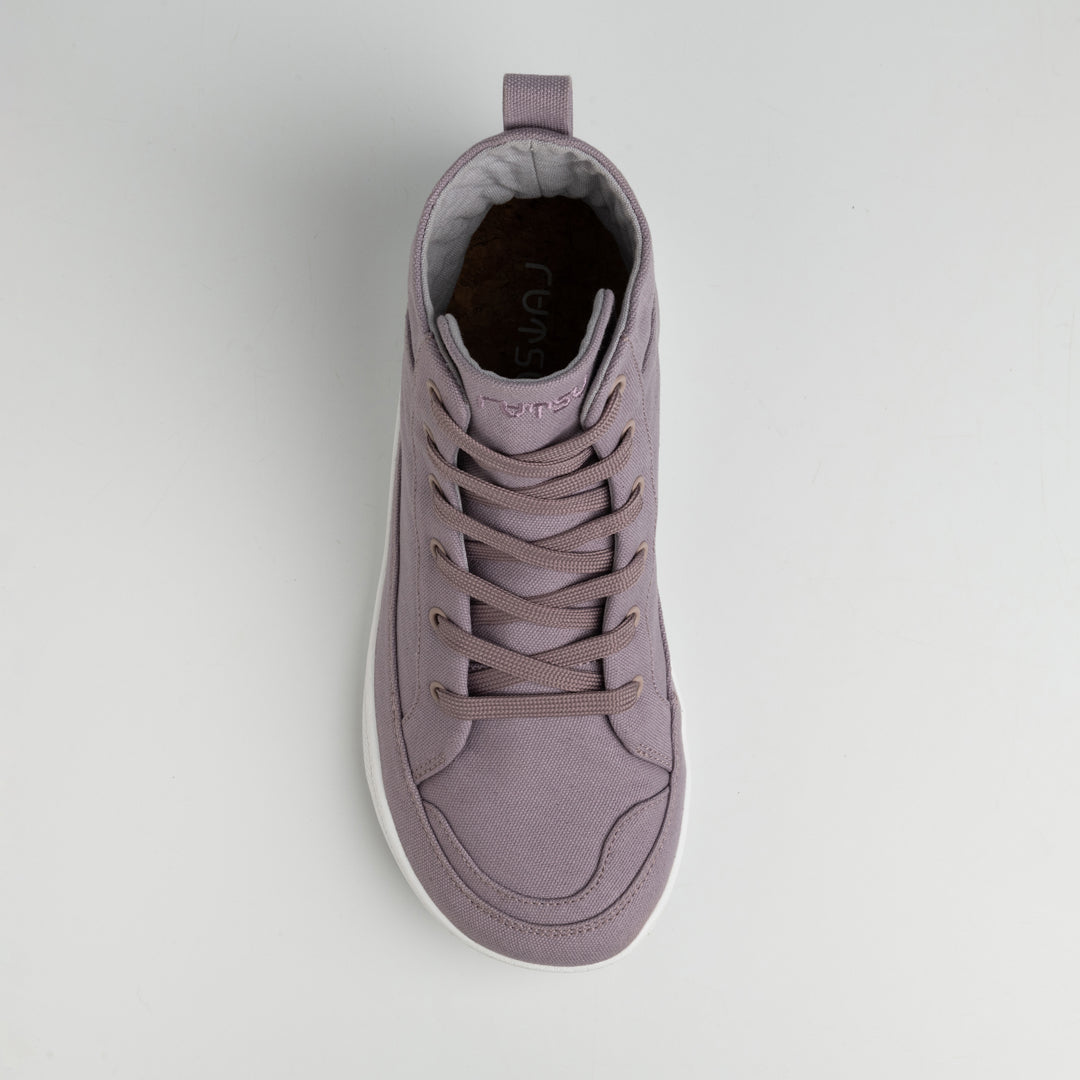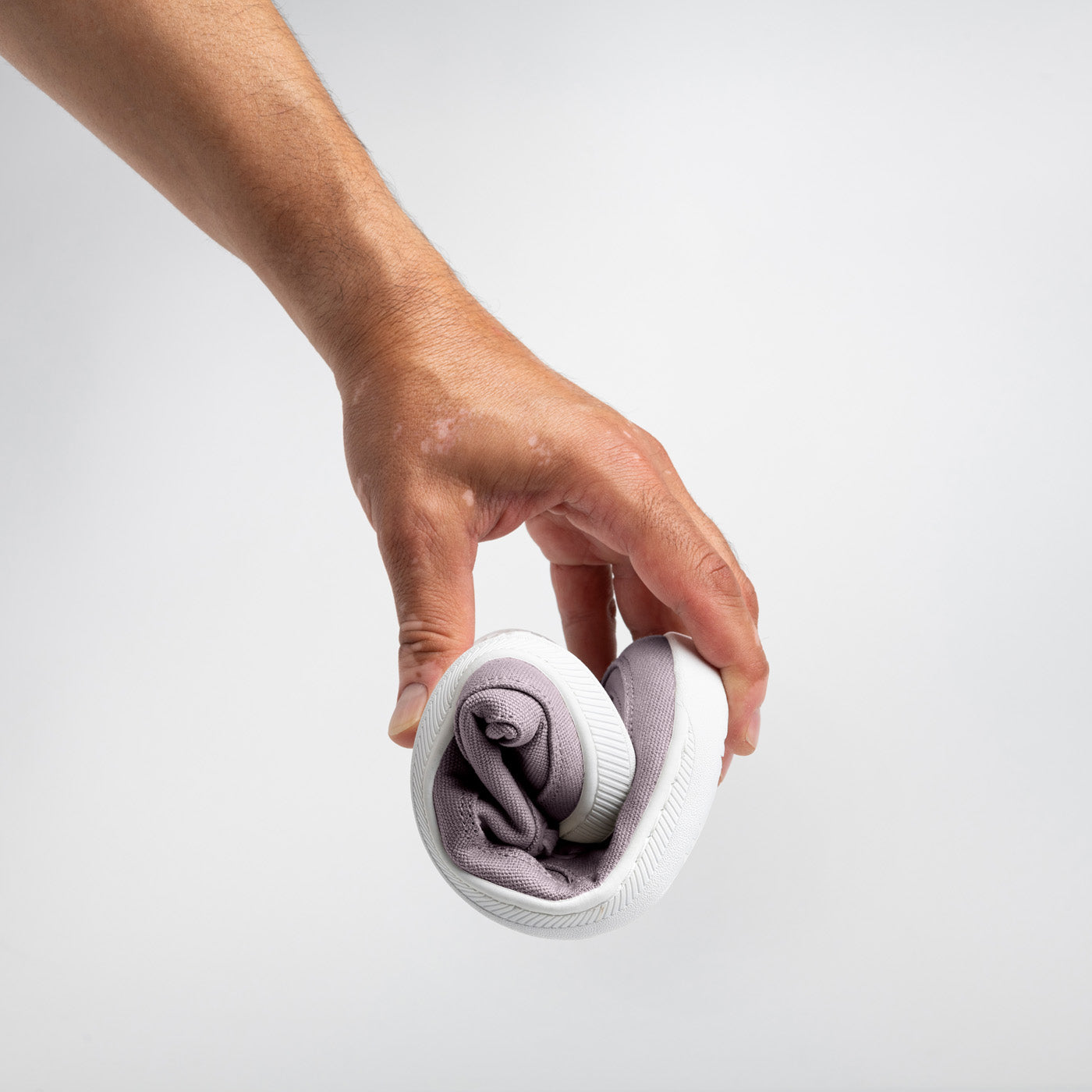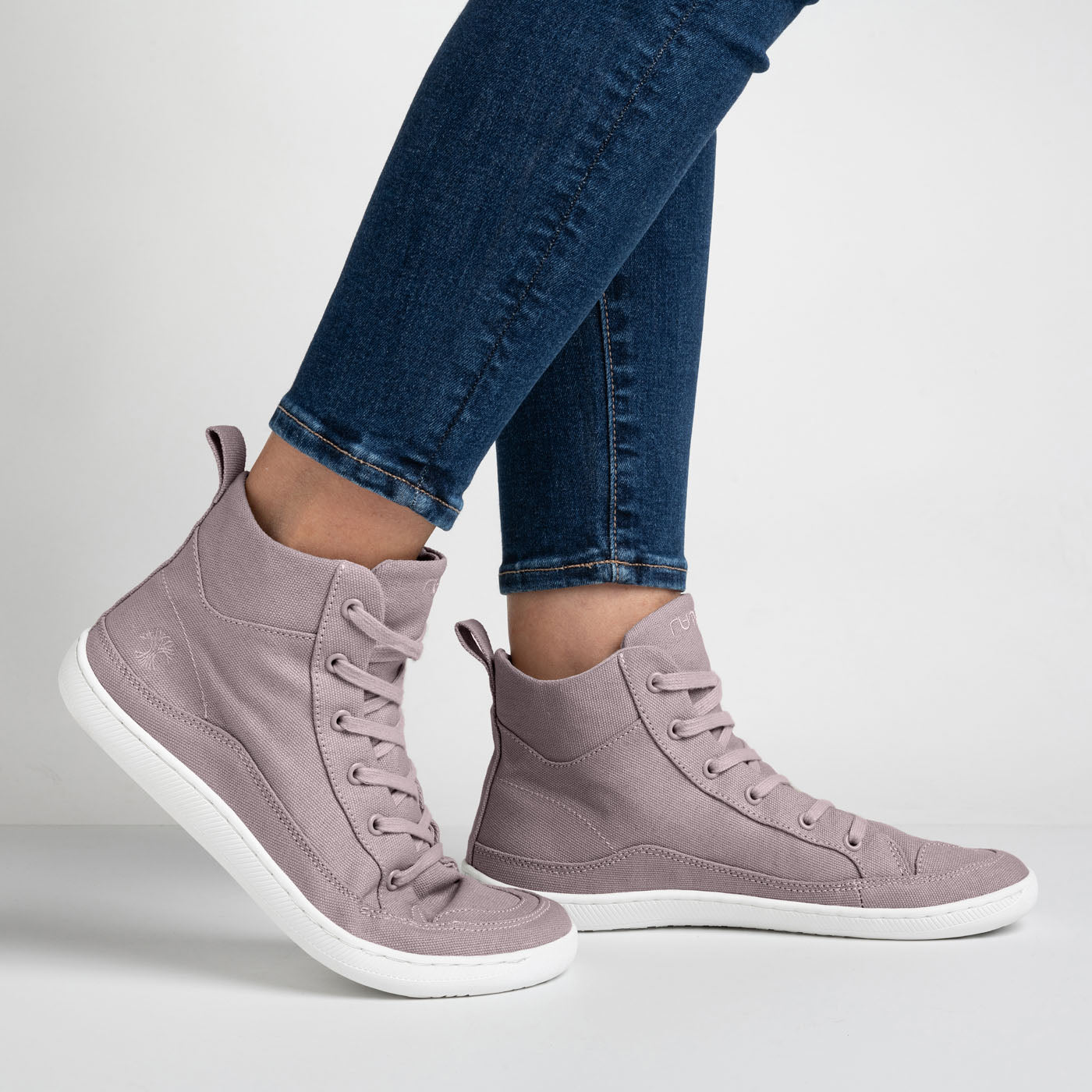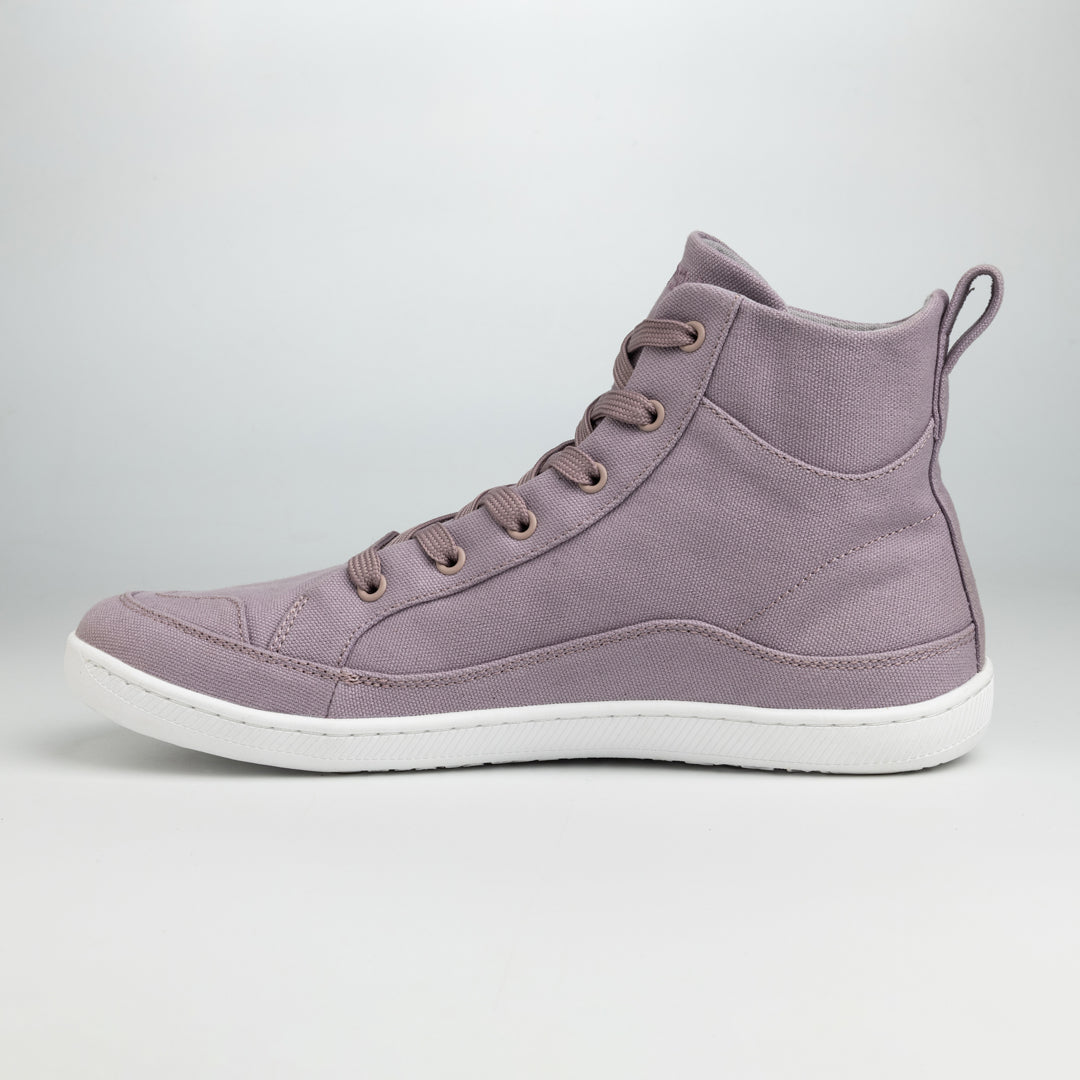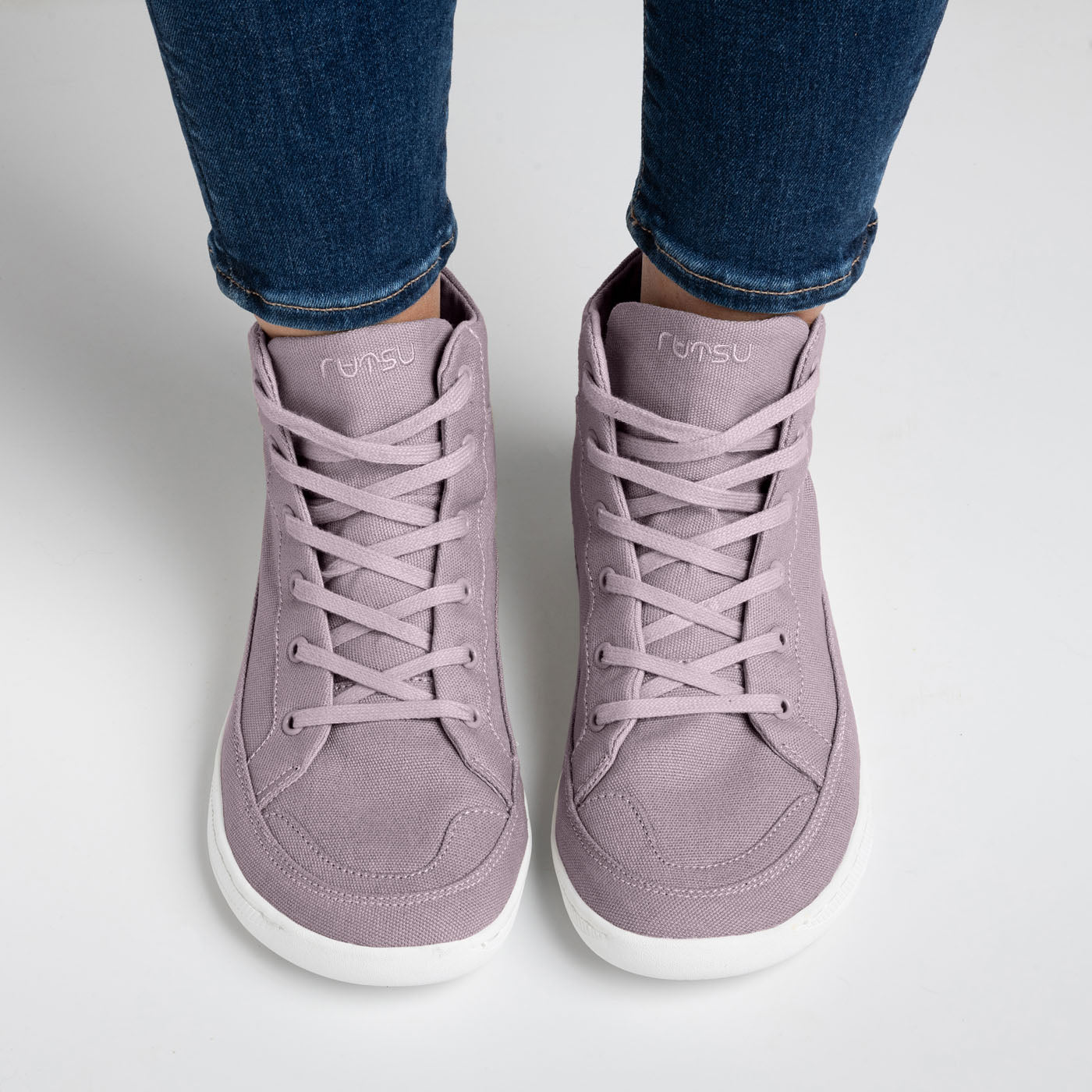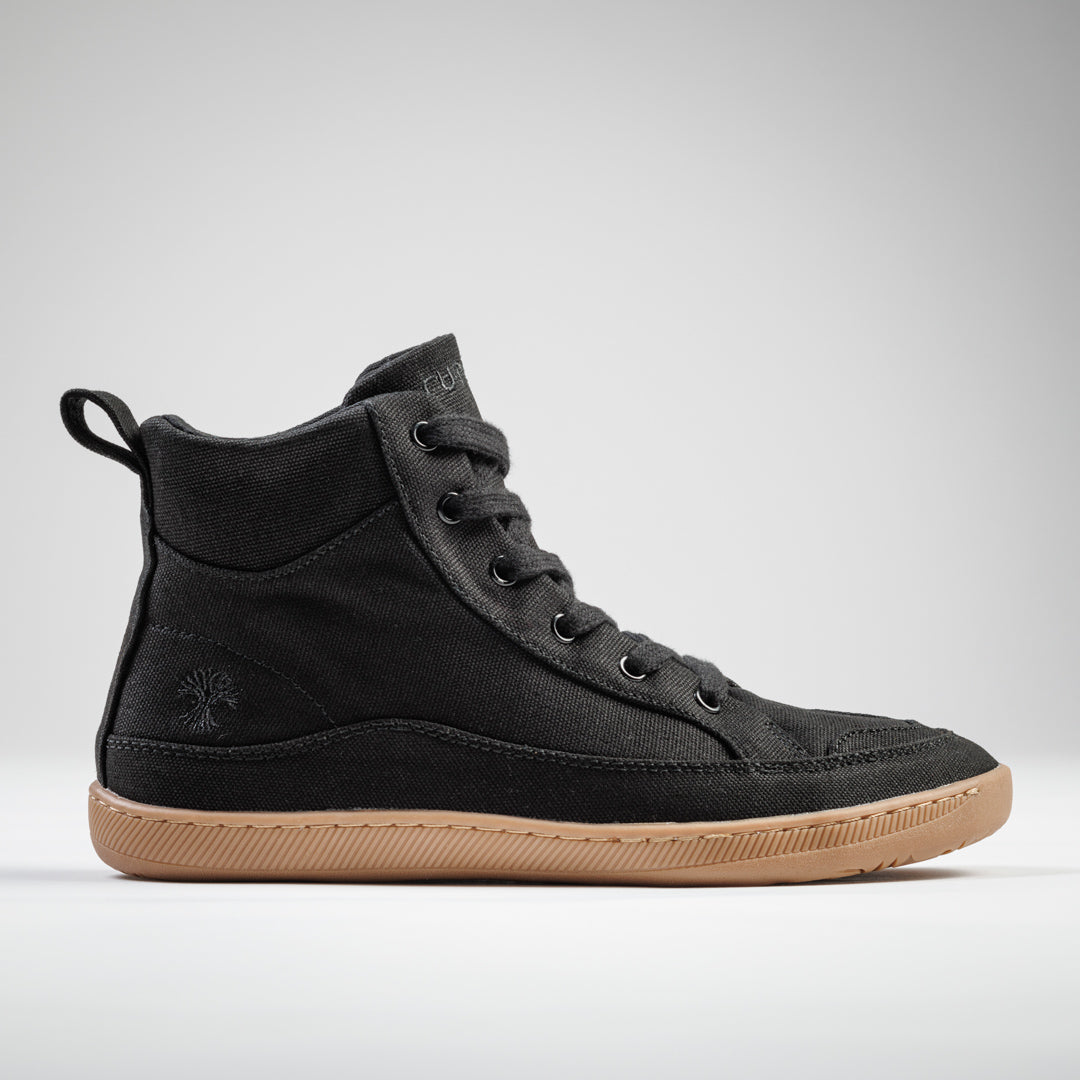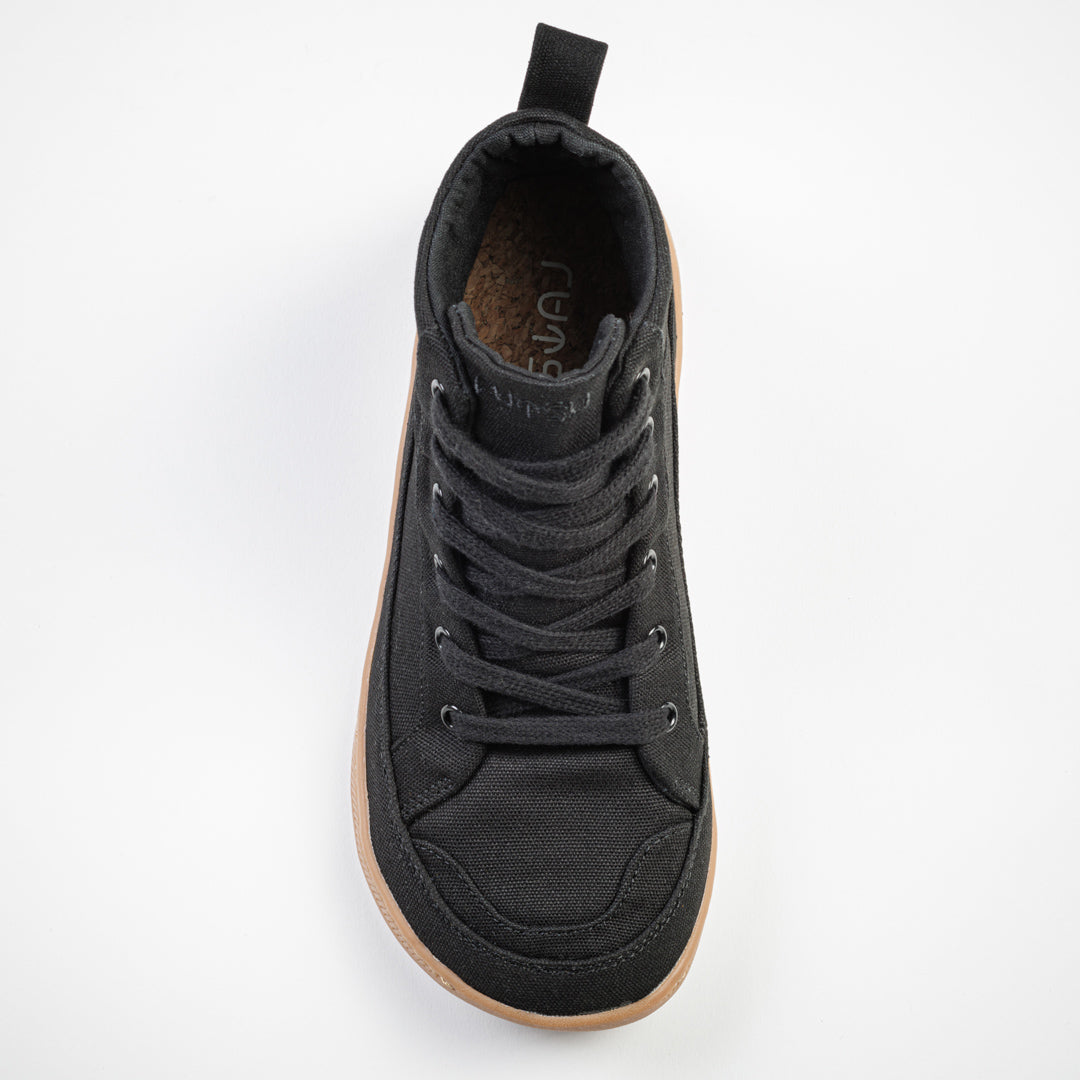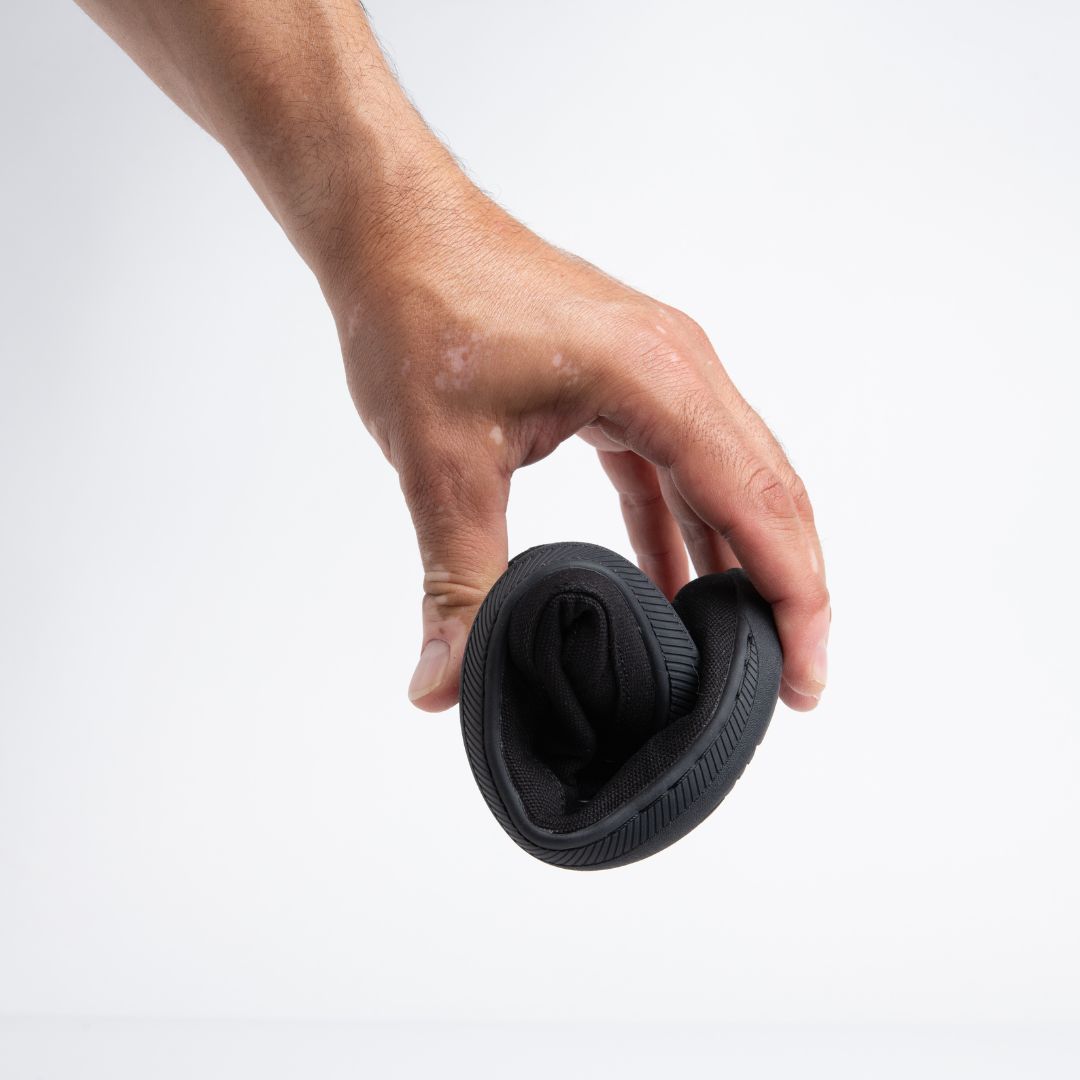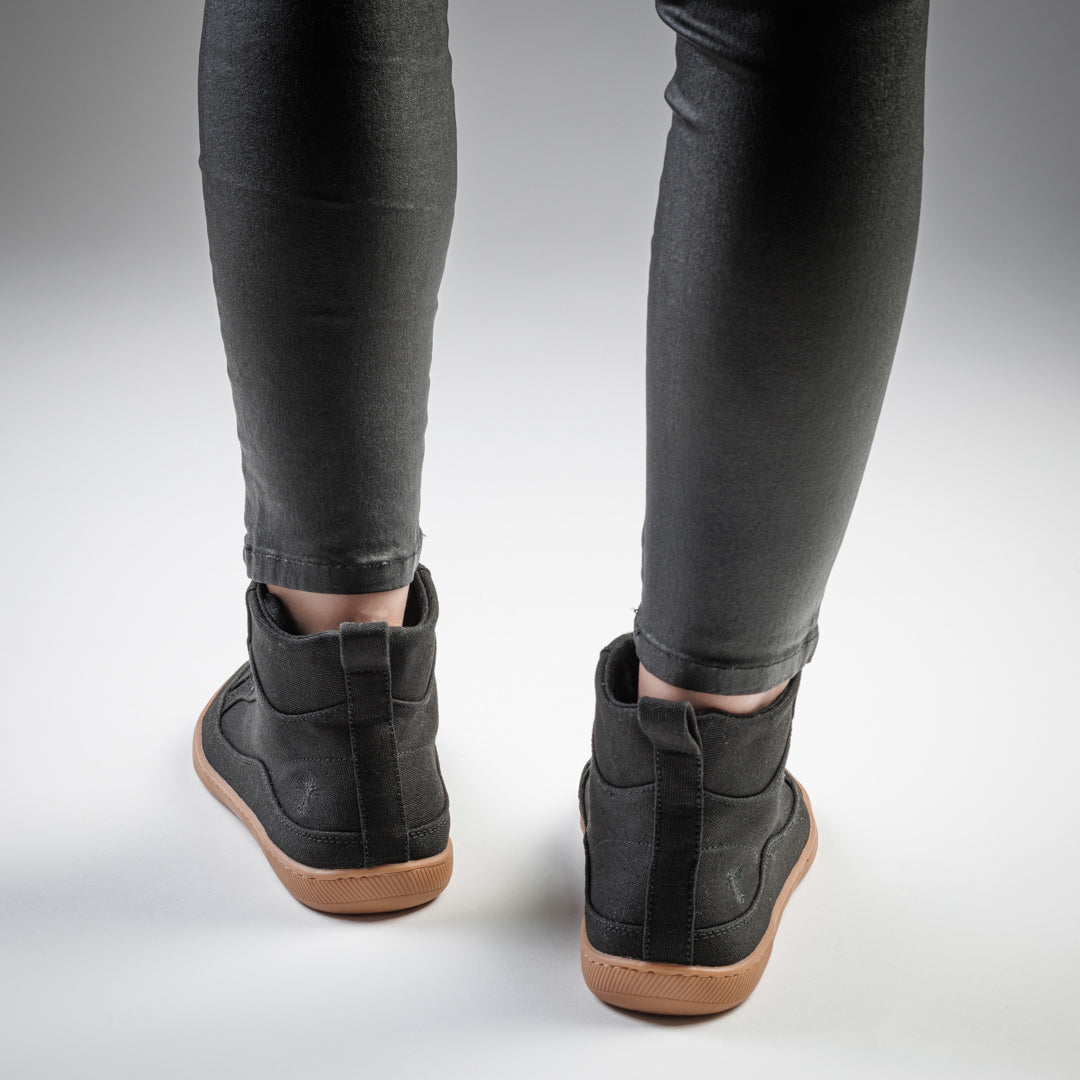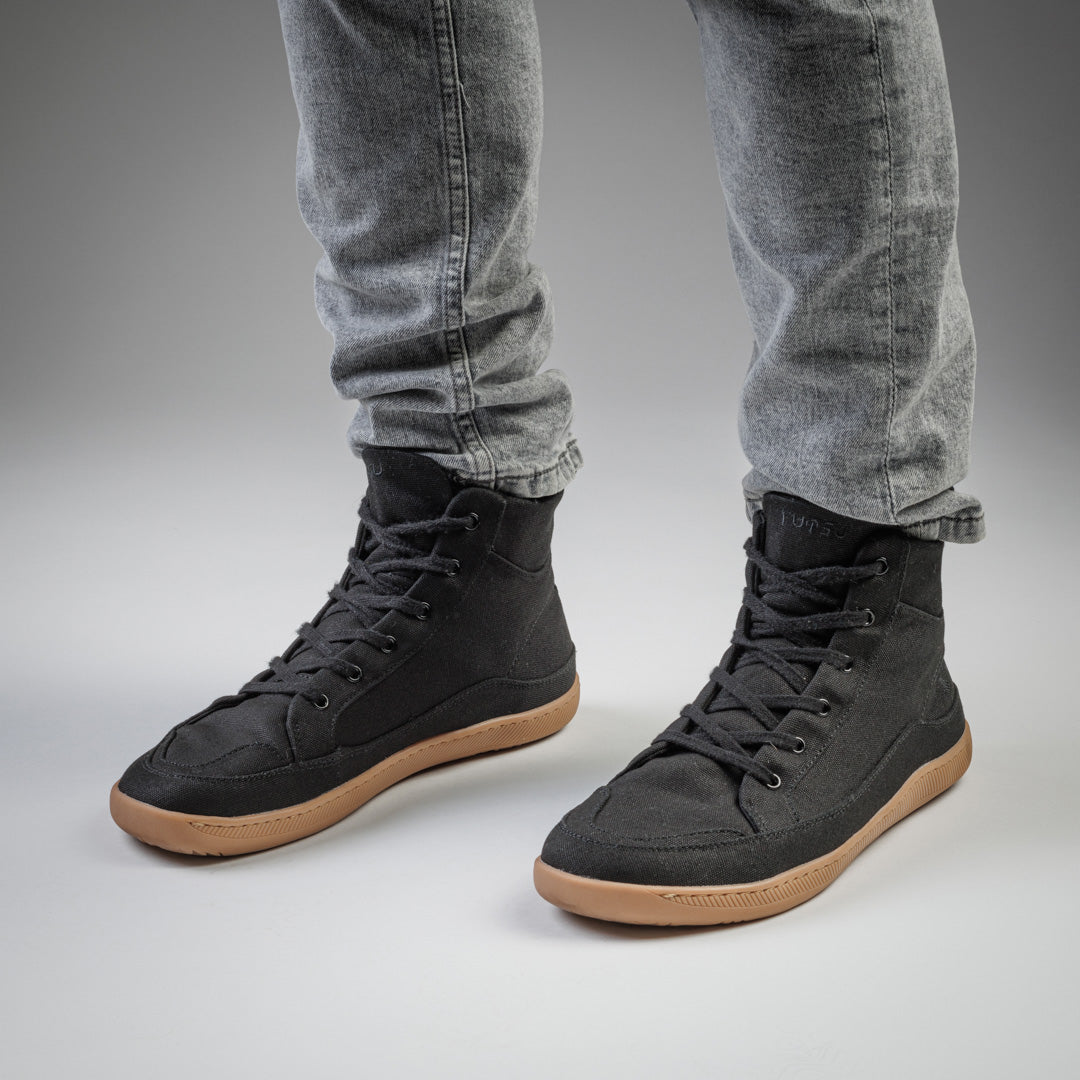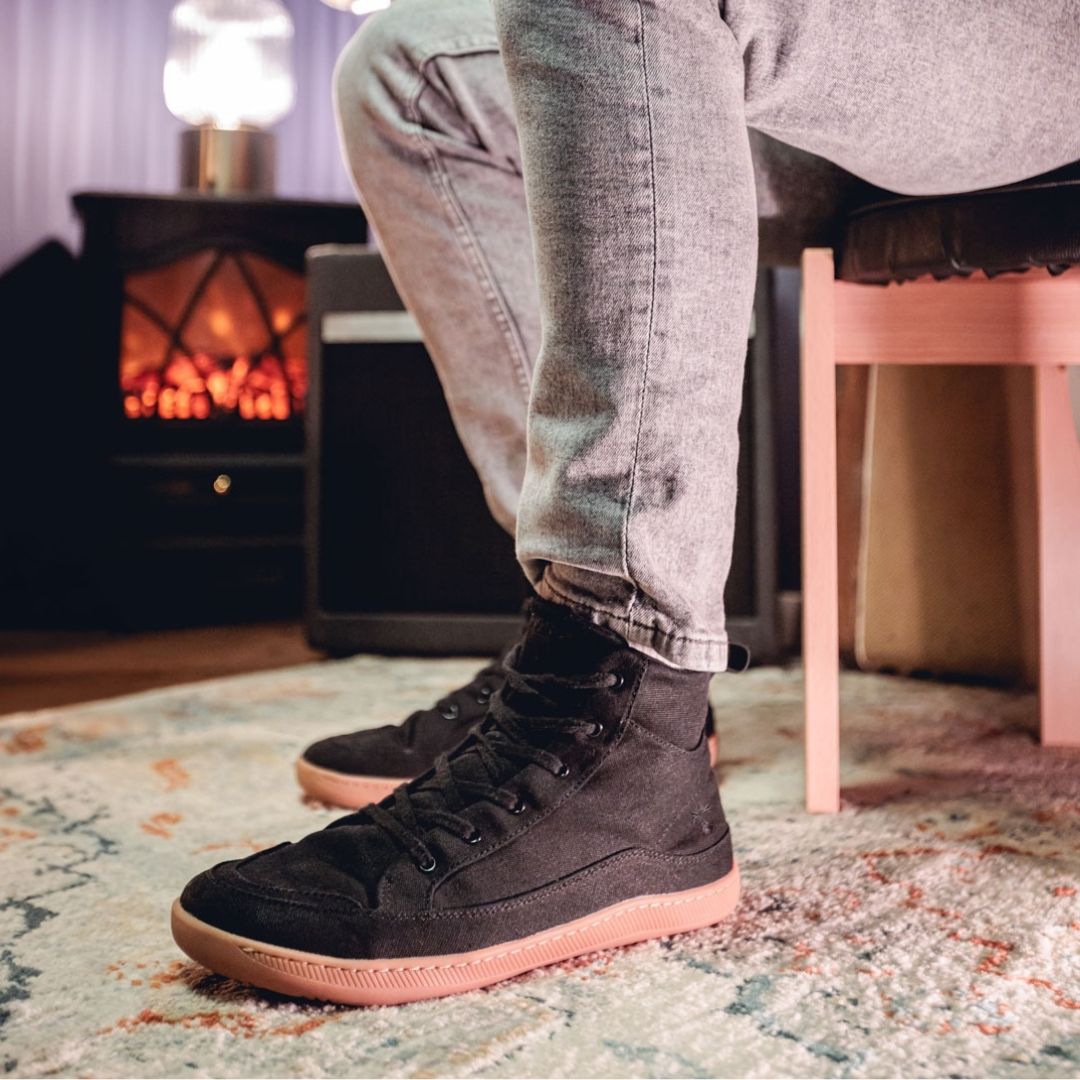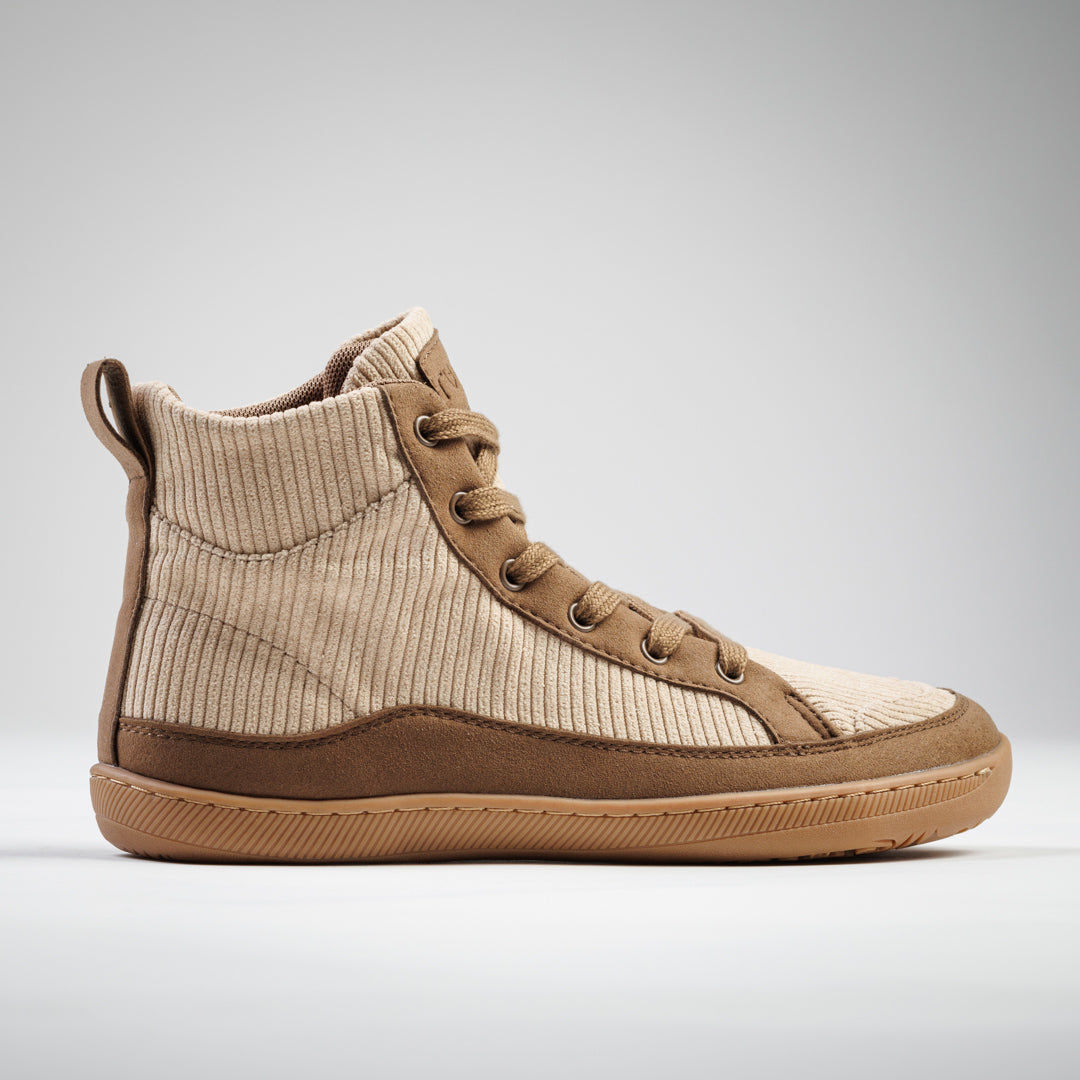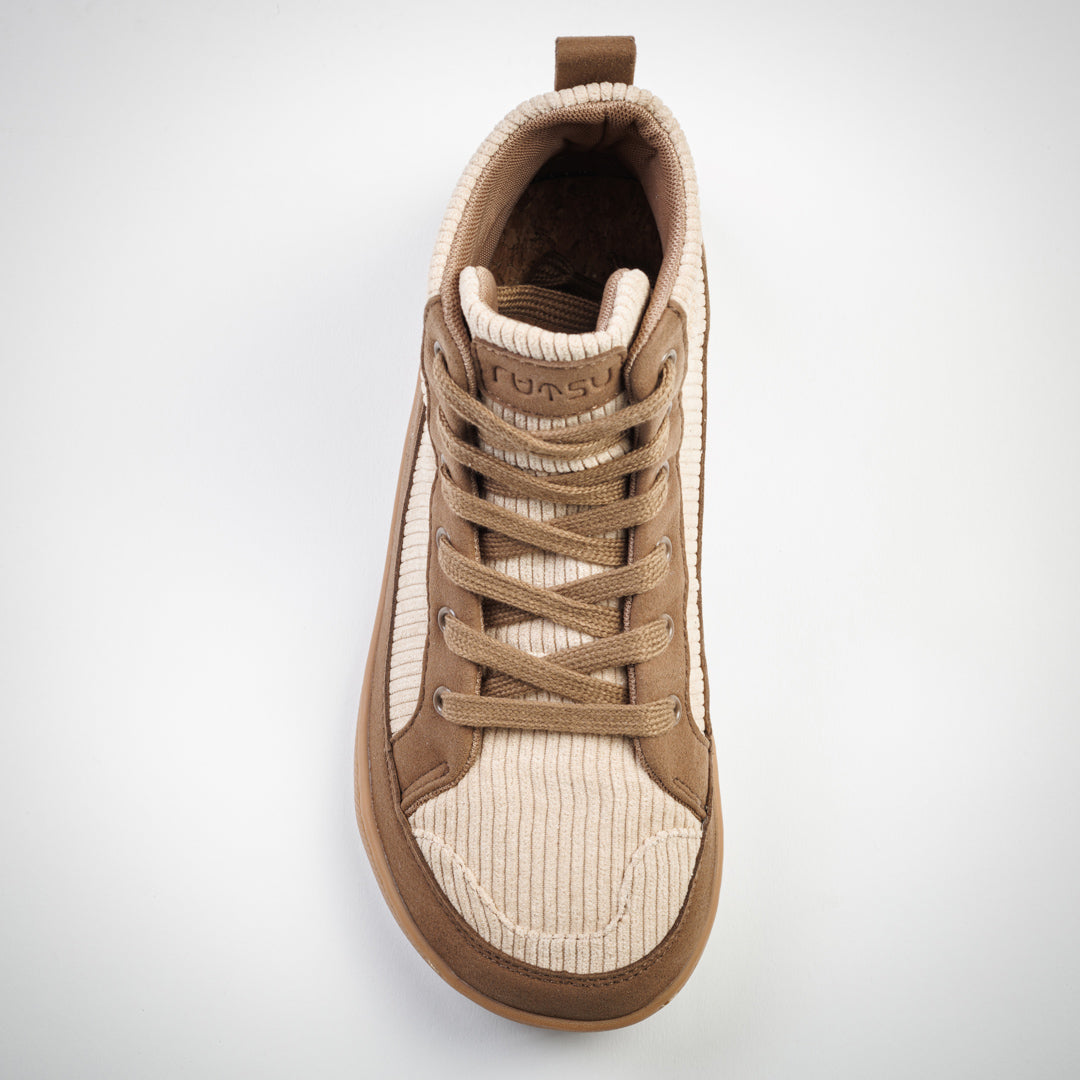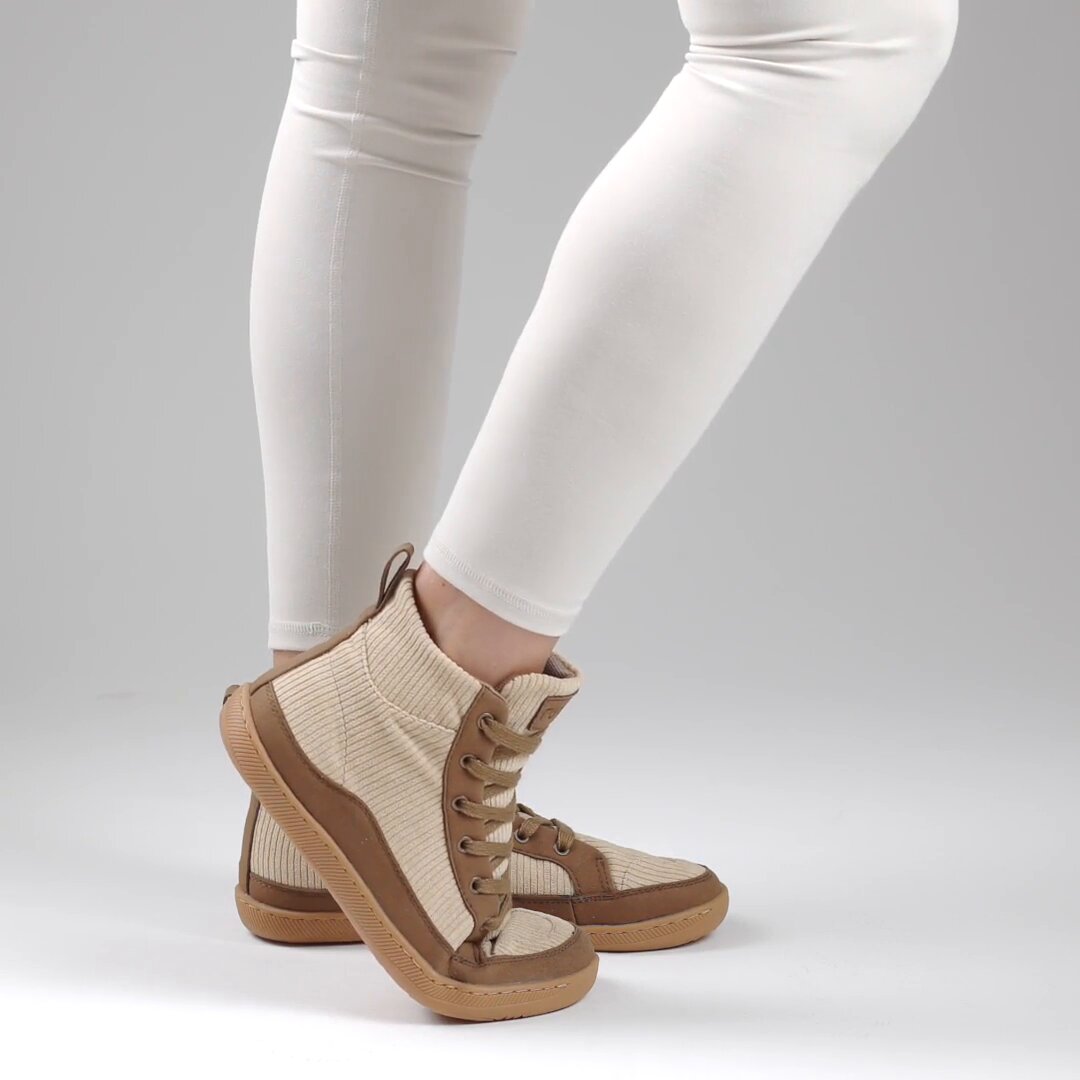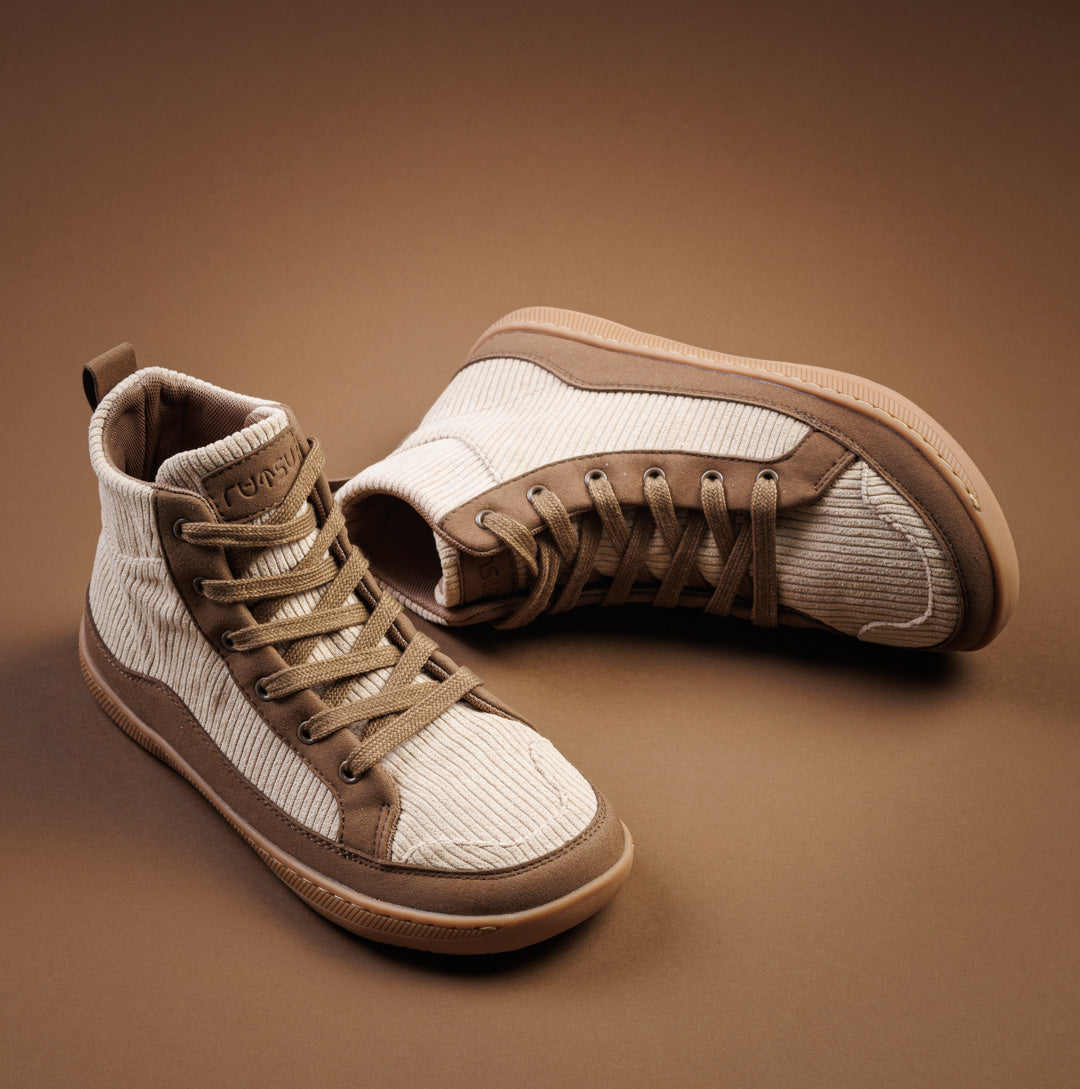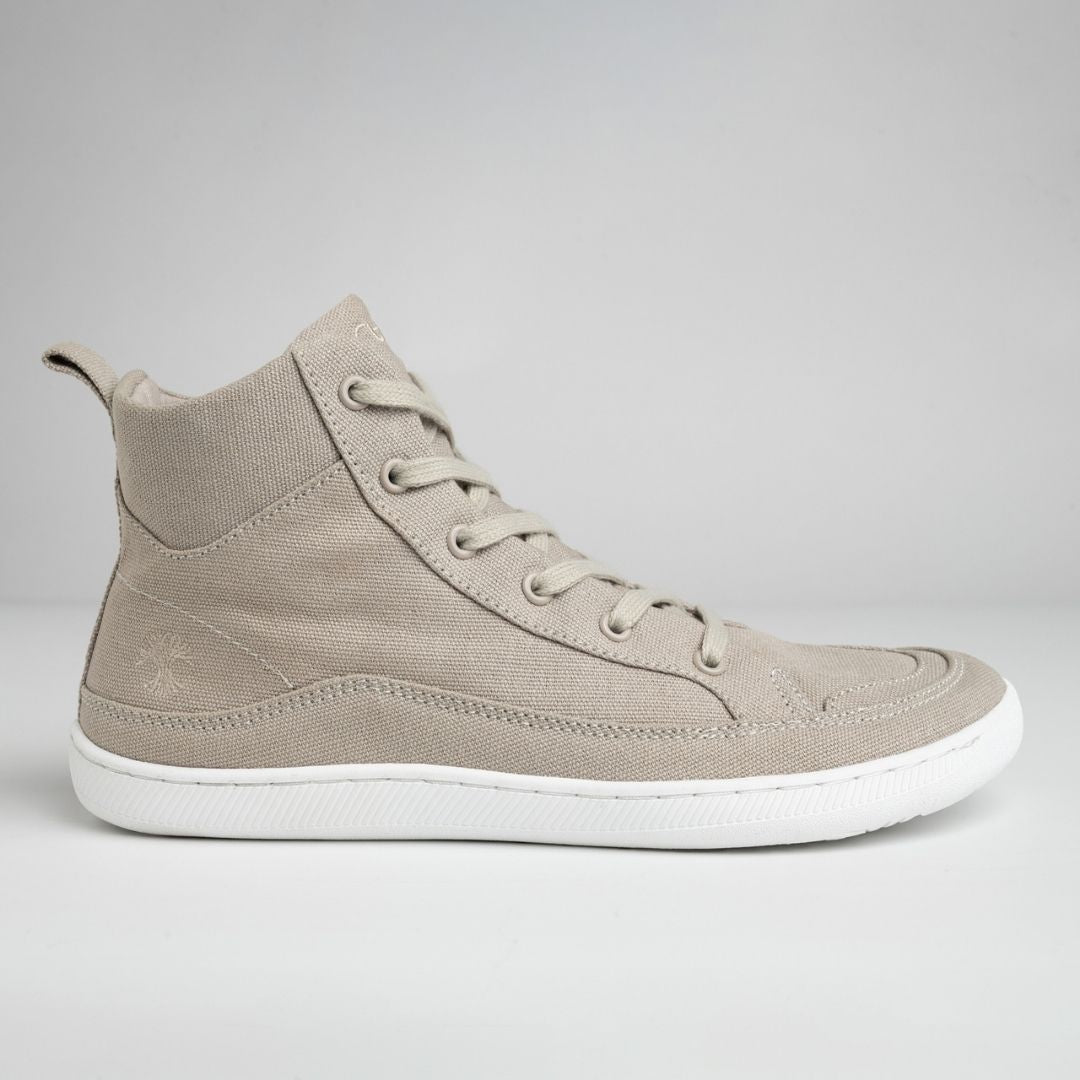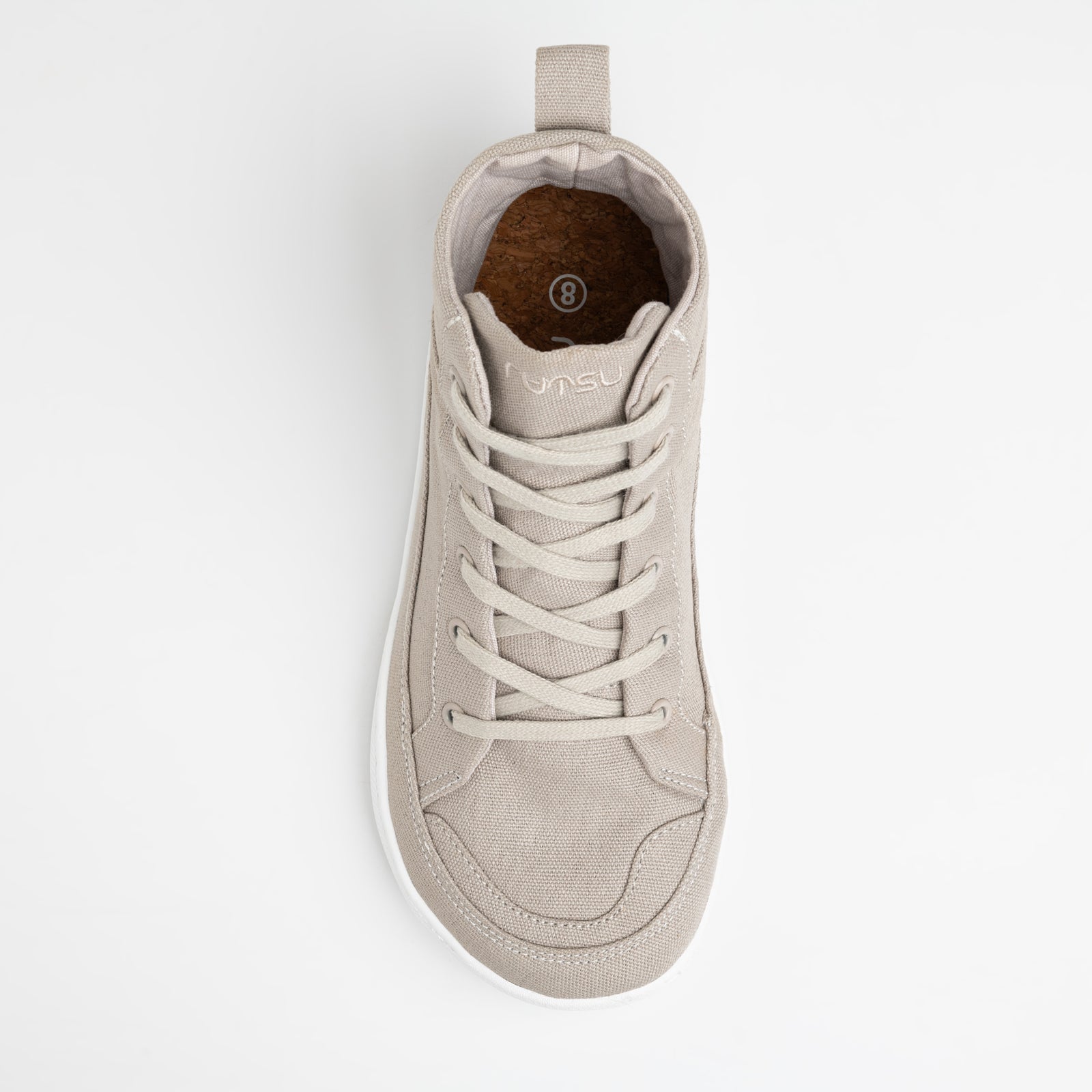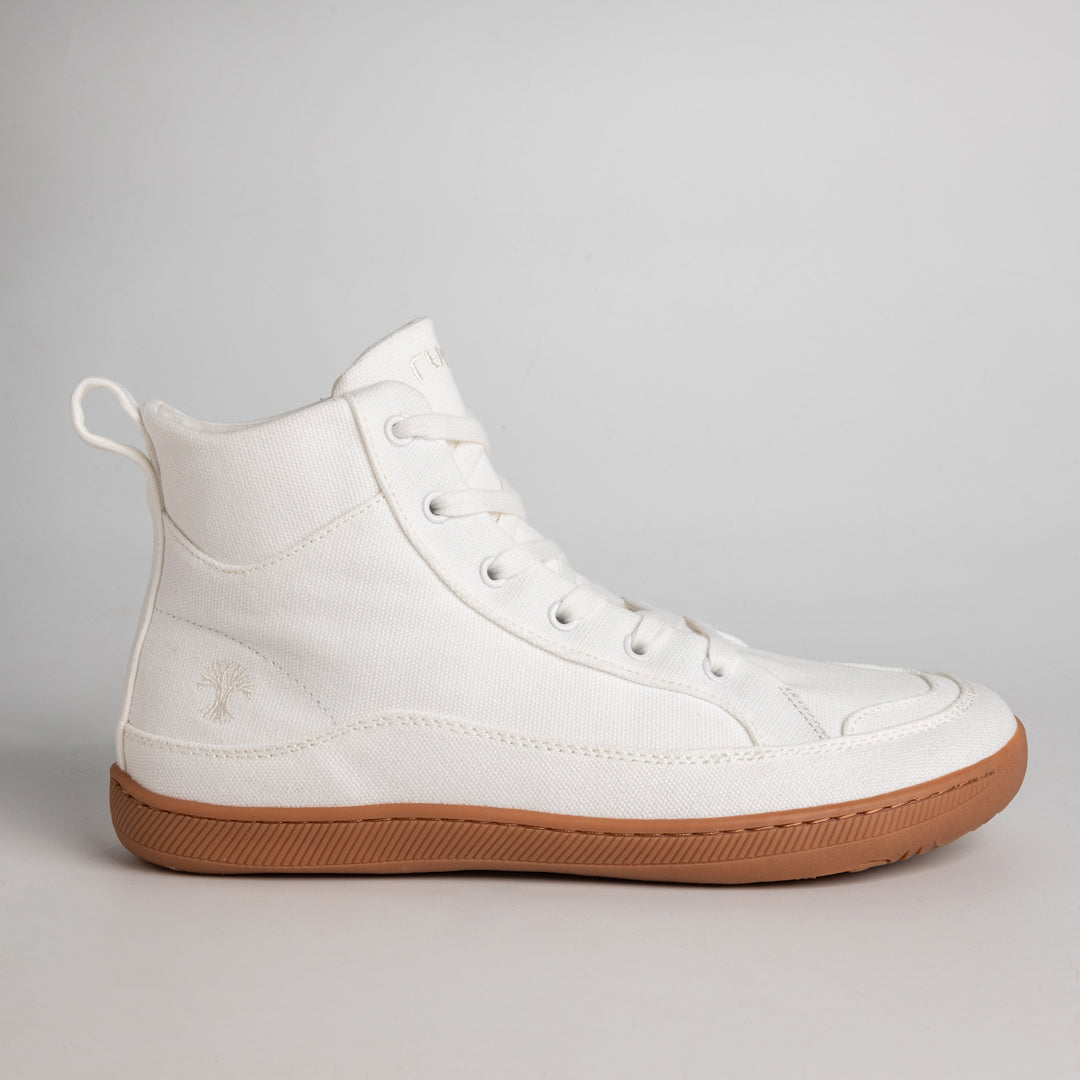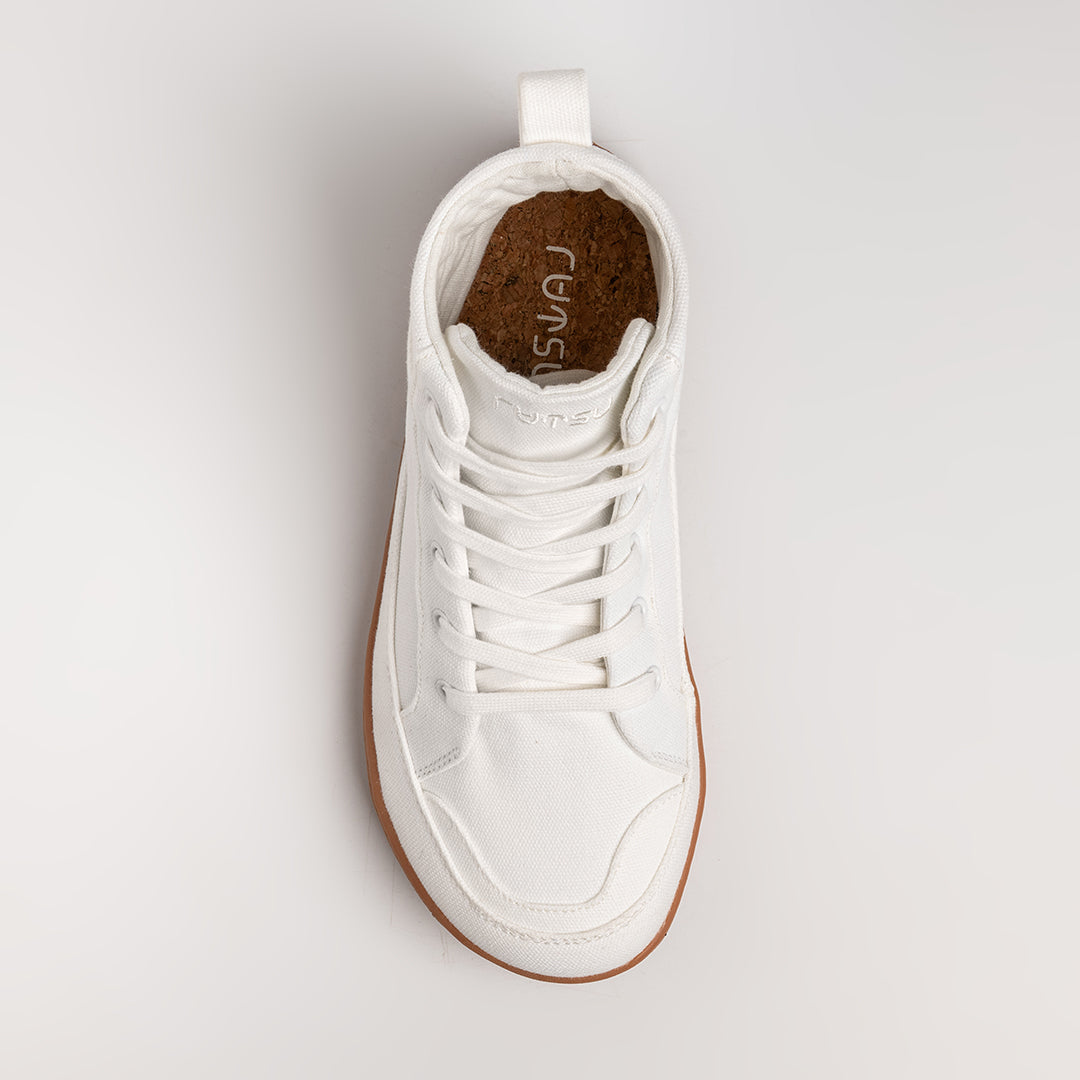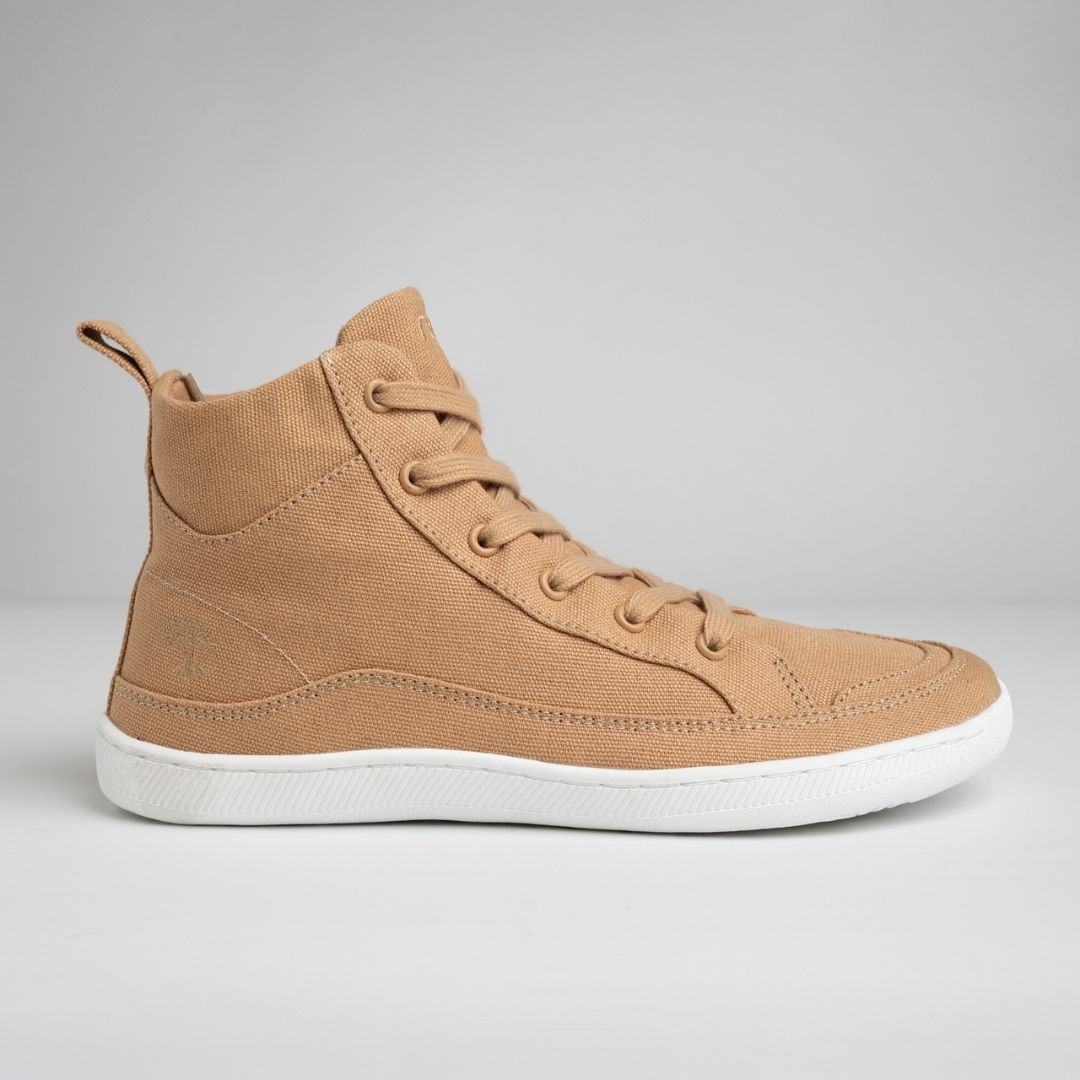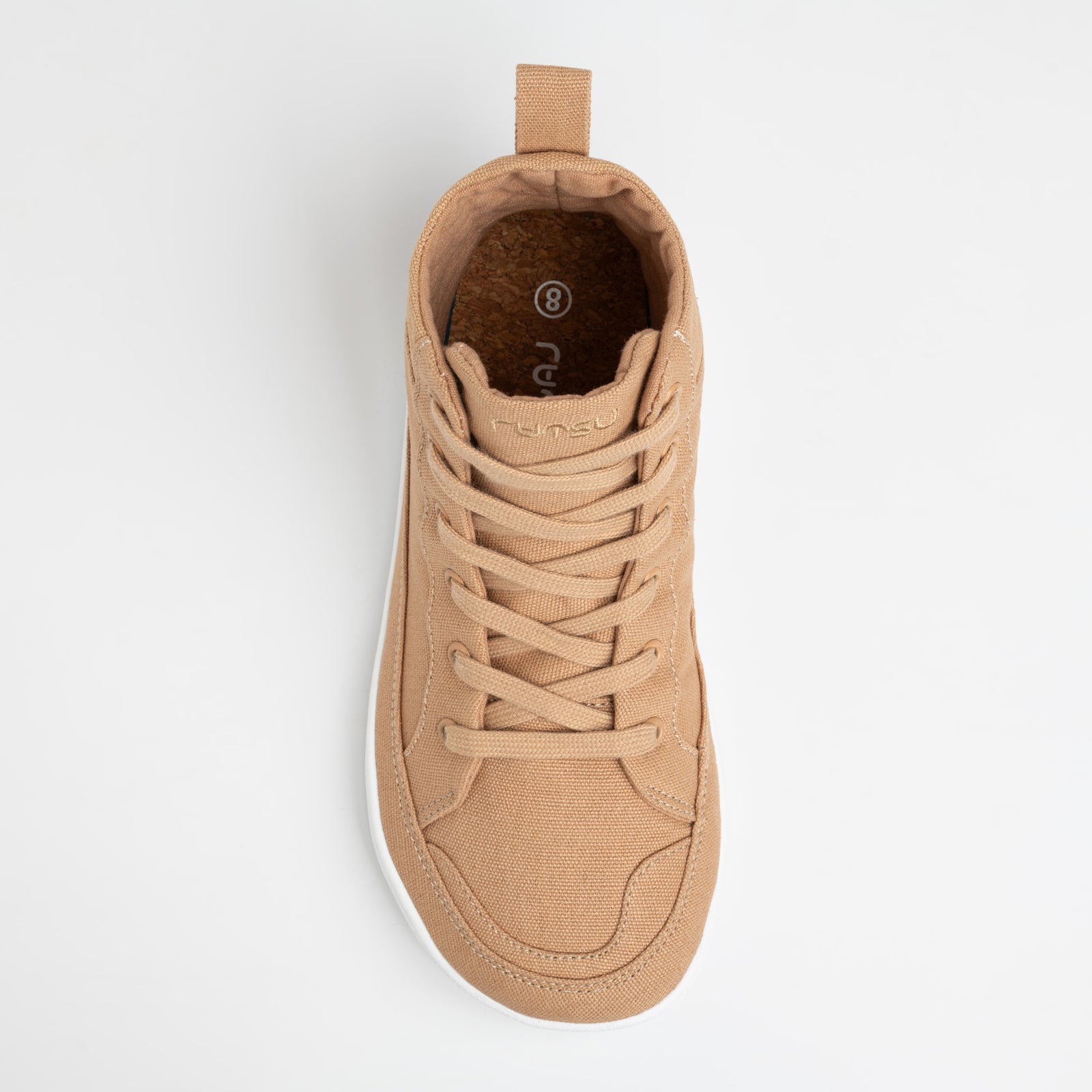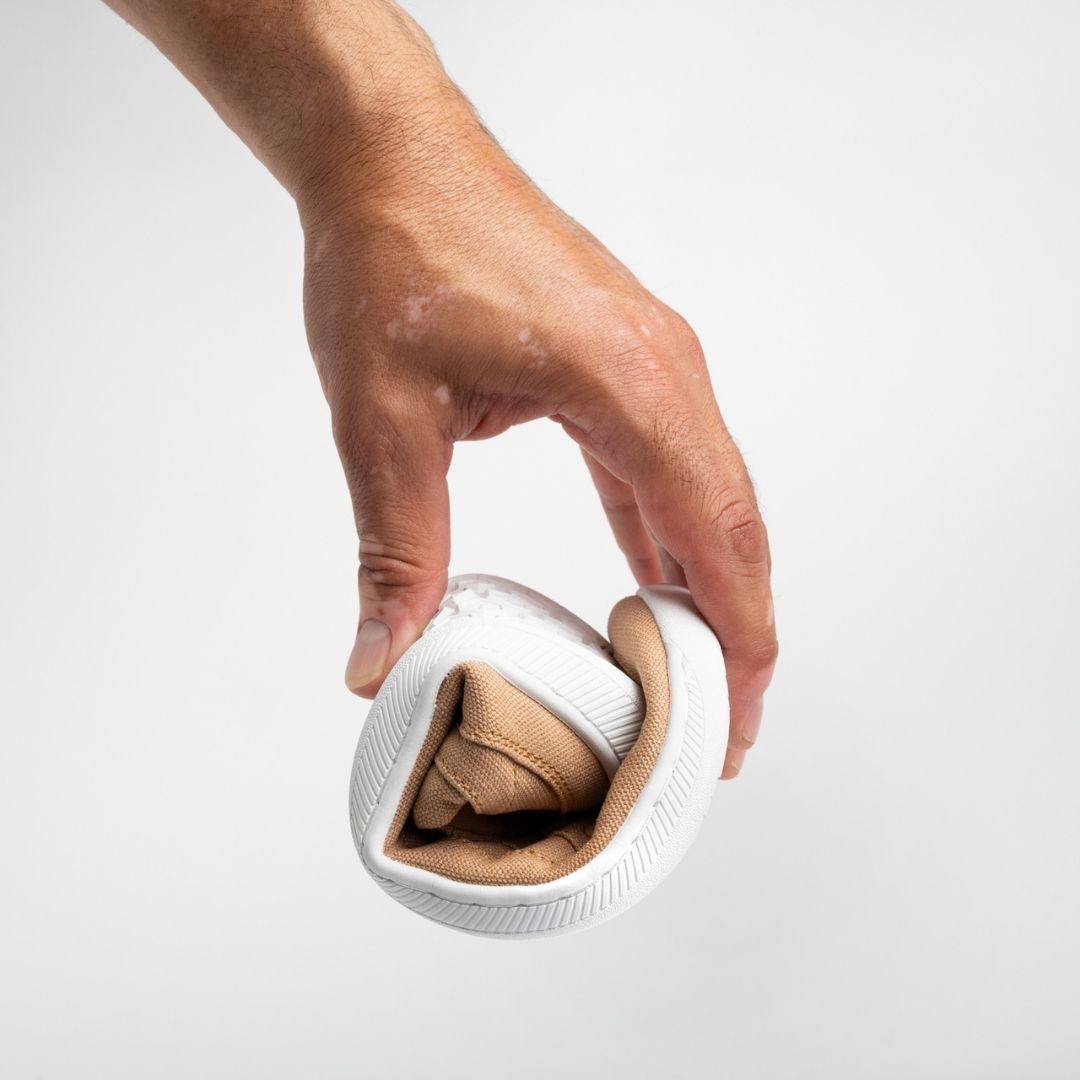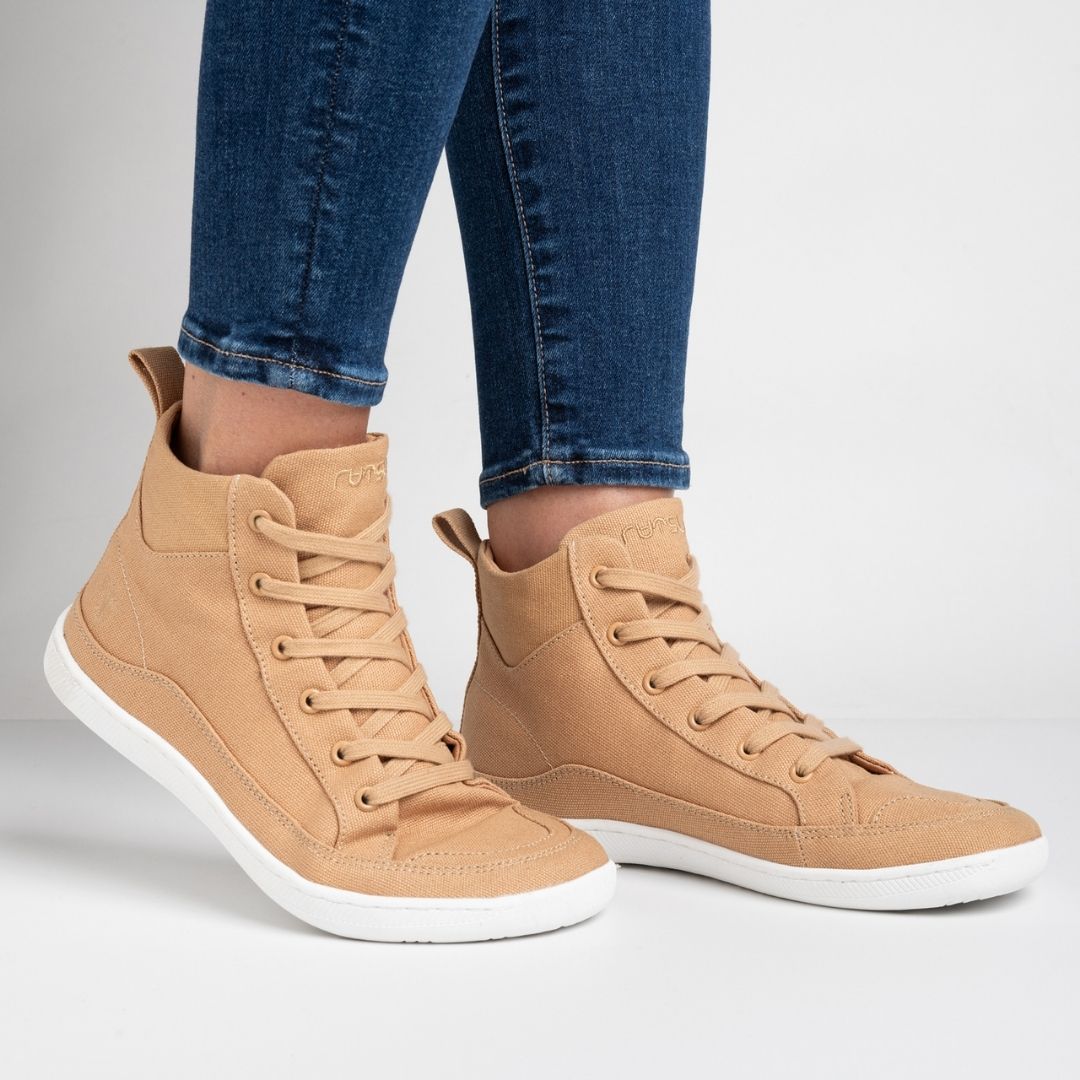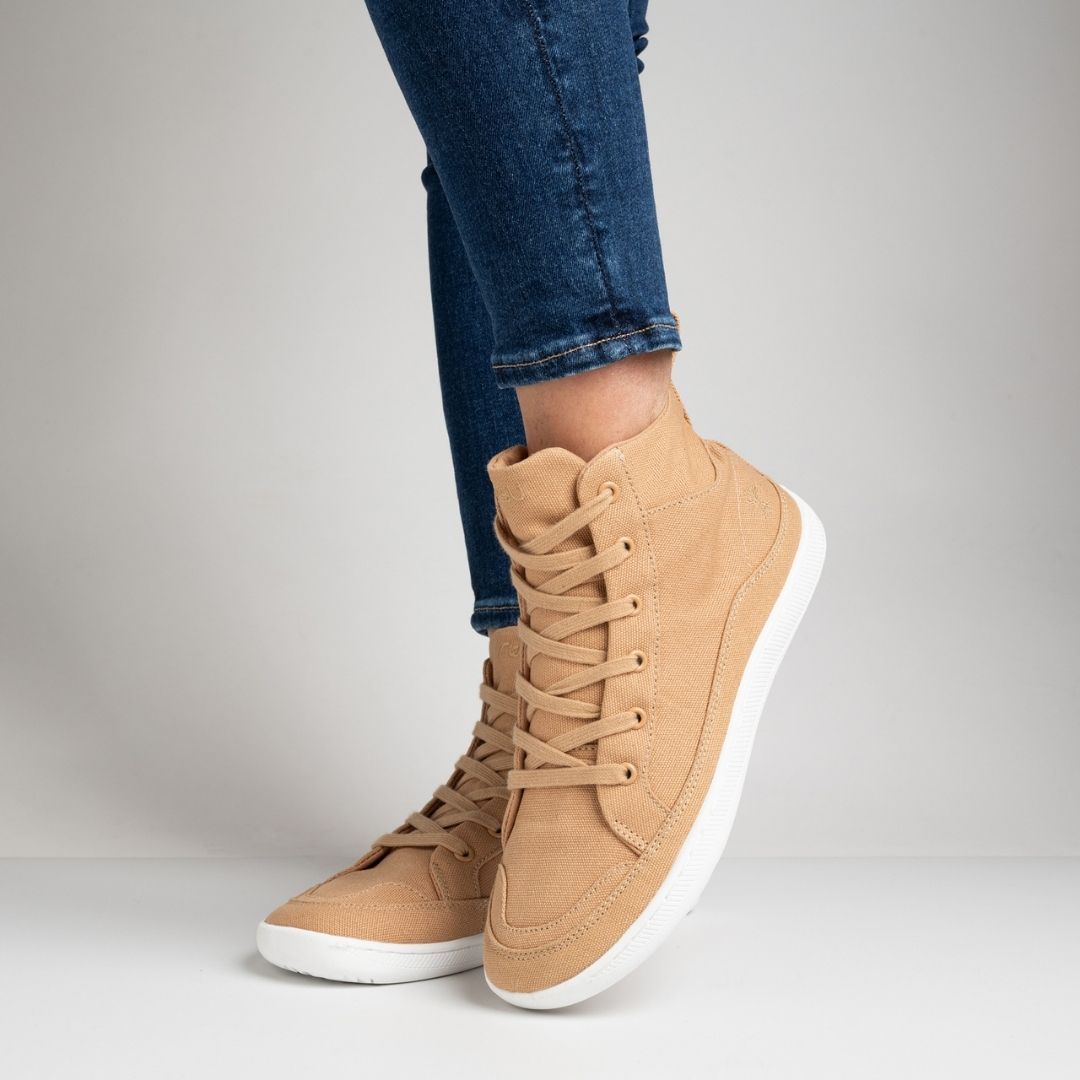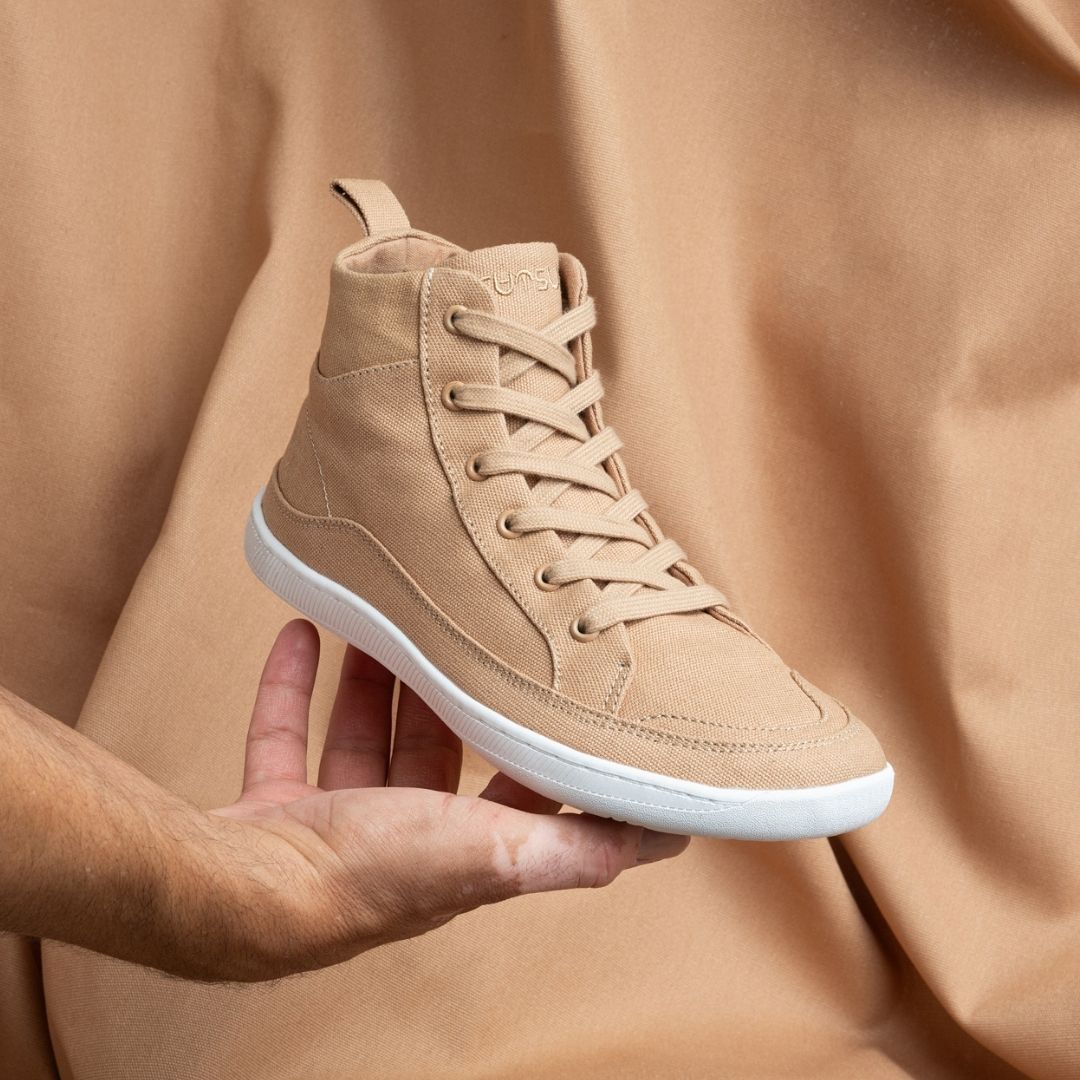Looking for footwear that doesn’t make your feet feel like they’re stuck in a straitjacket? Barefoot style shoes might just be your next best decision. These easygoing yet function-forward kicks mimic natural movement, ditching the bulk of traditional soles for something lighter, freer, and honestly—more fun to walk in.
Rutsu isn’t just making better footwear; we’re rethinking how your feet want to move. Our barefoot sneakers (available in high-top and low-top options) are built for those who like their comfort with a side of street style. And let’s be real—compared to what’s out there? Ours look better, feel better, and don’t require you to sell a kidney.
What Are Barefoot Style Shoes and How Are They Different from Regular Footwear?
Imagine walking through the world like your feet matter. That’s the core idea behind barefoot-style shoes. Unlike traditional kicks with thick soles, arch crutches, and toe-narrowing designs, these let your feet move the way they were meant to.
The big difference? You get:
-
A flat sole (zero drop from heel to toe)
-
A roomier front that gives your toes the freedom to spread out and move like they’re supposed to.
-
Flexible, ultra-light materials that let your feet bend, grip, and feel the ground
Regular shoes? They stiffen things up, elevate your heel like you're on a mini-stage, and compress your foot like it's on a deadline.
The Science Behind Barefoot Style Shoes: Why They’re Better for Your Feet
Your feet aren’t just slabs of skin and bone—they’re complex, shock-absorbing machines made up of 100+ muscles, tendons, and ligaments. When you wrap them in rigid padding all day, those muscles don’t get to work. It's like putting your foot in a cast… and then wondering why it's weak.
Barefoot style shoes encourage natural alignment and better proprioception (that’s your body’s GPS). Over time, wearing them can strengthen your feet, improve your posture, and even reduce stress on your knees and back.
We’re not just making this up. Science backs it—and our fans walk the walk.
Top Benefits of Switching to Barefoot Style Shoes You’ll Notice Immediately
So what changes when you switch? Here’s what our customers rave about:
-
More foot freedom: No more cramping or pinched pinky toes.
-
Better posture: You’ll literally feel yourself standing taller.
-
Improved balance: Like suddenly being better at yoga… without trying.
-
Lightweight comfort: Our barefoot sneakers feel more like socks with grip than clunky footwear.
Want to know if these kicks help with foot pain? Here’s a deep dive: Are barefoot shoes good for plantar fasciitis? Spoiler: they might just be your new MVPs.
Common Misconceptions About Barefoot Style Shoes – Debunked
Time to set the record straight, because the buzz has gotten a little noisy. Trust us, we’ve heard it all.
“Aren’t these just glorified slippers?”
Hard no. Our barefoot sneakers are street-tested, gym-approved, and grocery-run certified. They're minimalist, not minimal.
“Won’t my feet hurt without arch support?”
At first? Maybe a bit. But that’s your foot waking up from a lifetime nap. Give it time, and it gets stronger.
“They look weird.”
Not ours. Check out our stylish barefoot shoes—minimal doesn’t have to mean meh.
Who Should (and Shouldn’t) Wear Barefoot Style Shoes? Expert Insights
If this is you, start slow. Wear them for short outings. Your body needs time to adapt, but when it does, you’ll feel the difference from the ground up.
These are a great fit for:
-
Walkers, hikers, and movement nerds
-
Folks are over aching feet and shoes that feel like a chore to wear.
-
Gym-goers who want better grip and ground feel.
Who might need to ease in? Folks with:
-
Serious foot deformities
-
Major arch issues (consult your podiatrist first)
-
Zero patience (yes, there’s an adjustment period)
Barefoot Style Shoes vs Traditional Shoes: A Side-by-Side Comparison
One actually works with your body, letting your feet move the way they’re meant to. The other? It just gets in the way—and your feet know it.
Barefoot Style Shoes
-
Heel Drop: Zero
-
Toe Box: Wide and roomy
-
Flexibility: High
-
Sensory Feedback: Excellent
Traditional Shoes
-
Heel Drop: Elevated
-
Toe Box: Narrow and tapered
-
Flexibility: Stiff
-
Sensory Feedback: Dull
Let your feet be feet again. Stylish. Functional. Affordable. That’s Rutsu.
How to Choose the Right Barefoot Style Shoes for Your Lifestyle
Don’t overthink it. Go with what makes your feet, and your reflection, smile. Picking your pair doesn’t have to feel like a science project. Here’s how to narrow it down:
-
For busy days on the go: Our barefoot sneakers keep up—whether you're power-walking to work or hitting those afternoon squats.
-
For weekend vibes: Slip into something from our casual line—cool enough to wear out, comfy enough to keep on all day.
-
For daily errands: Look for low-top options that blend seamlessly into your routine.
Final Thoughts: Give Your Feet the Freedom They’ve Been Begging For
If your current footwear is all cushion and no function, it might be time for a switch. Barefoot style shoes offer that rare combo: natural movement, solid comfort, and a fashion-forward look that turns heads.
Here at Rutsu, we believe your feet deserve better. That’s why we design every pair with intention—whether you're grabbing groceries or heading out for a casual hike. Our barefoot sneakers are proof that practical can still be fresh.
Ready to give your feet a little breathing room? Shop our barefoot sneakers and feel the difference from step one.
FAQs
Do barefoot-style shoes actually improve posture and balance?
Yes—by encouraging your body to stand the way it was designed to. Without artificial heel lift or rigid arch support, your spine naturally aligns and your core gets in on the action too.
Can I wear barefoot-style shoes for running or intense workouts?
Absolutely, once your feet are conditioned. Many runners say they experience fewer injuries after transitioning. Just remember to start slow and build up—your calves will thank you later.
Are barefoot-style shoes suitable for people with flat feet or foot pain?
Many people with flat feet report improvements. But it’s not one-size-fits-all. The smart move? Start slow and let your body guide the way.
How much time does it take to get used to barefoot-style shoes?
It varies, but most folks feel more natural within 2–4 weeks. Begin with brief walks, then slowly add more time as your feet adjust.
What’s the difference between barefoot style shoes and minimalist shoes?
They’re similar, but barefoot-style shoes tend to go all-in with zero drop, max flexibility, and wide toe boxes. Some minimalist brands still sneak in a heel or stiff midsole—so check the details.



